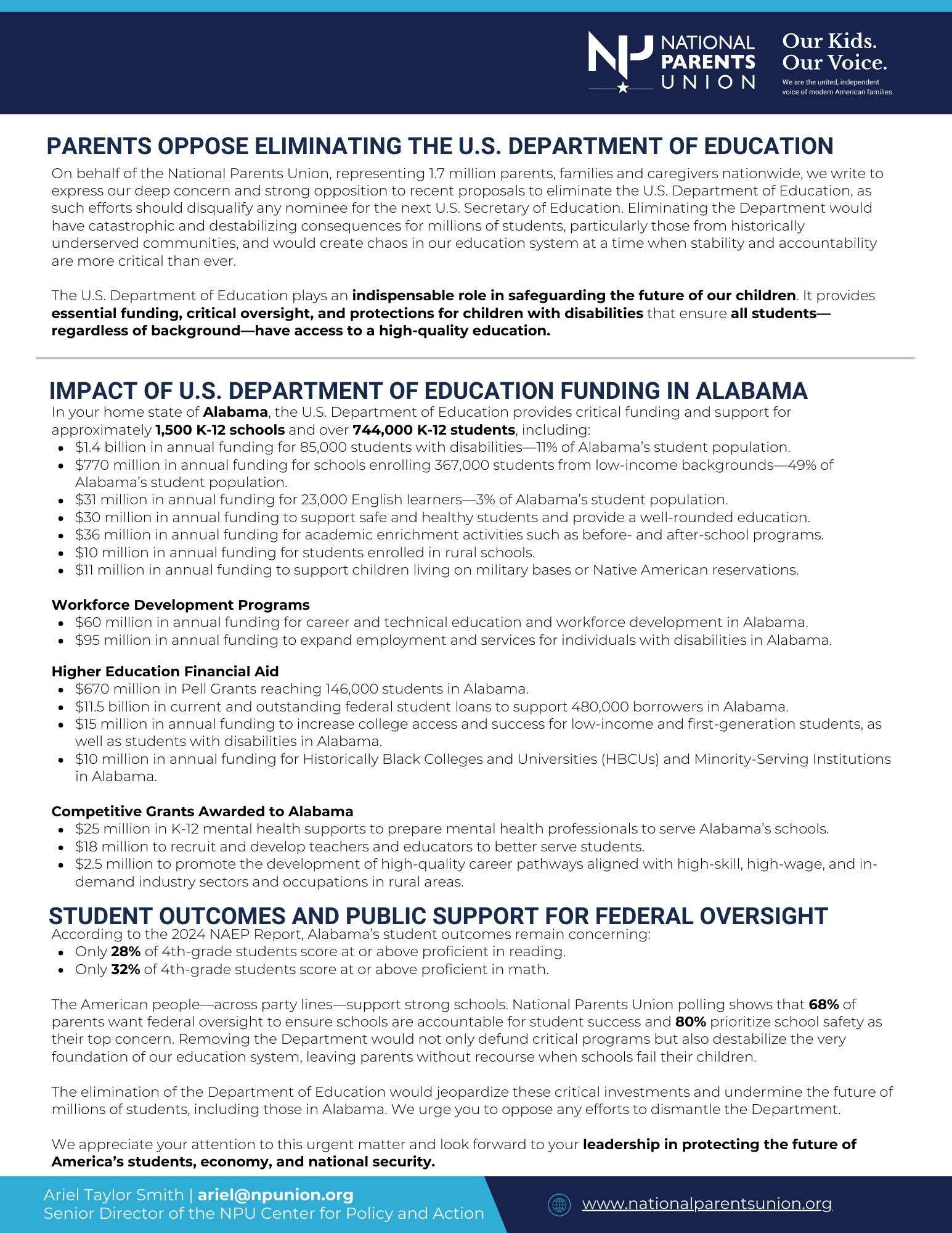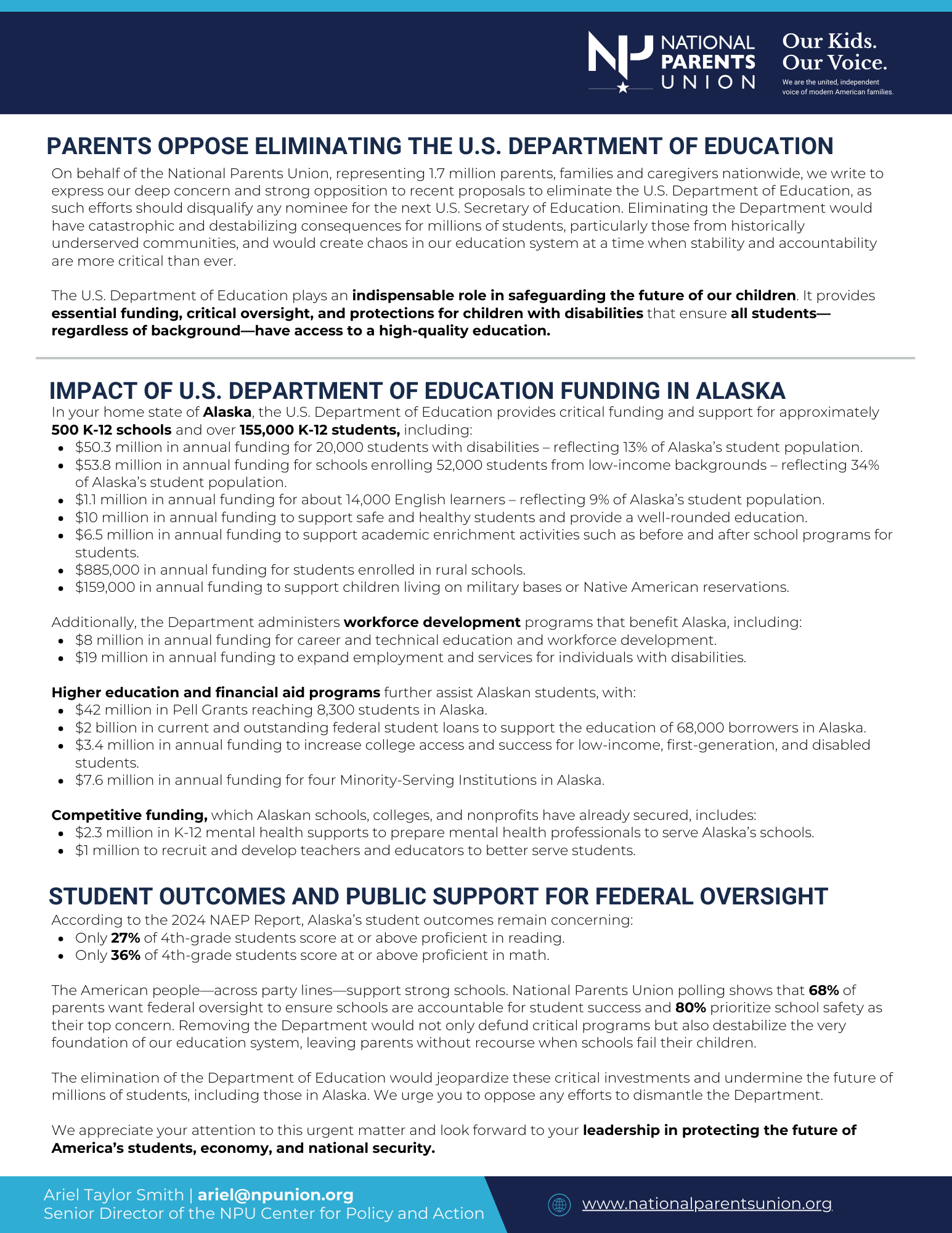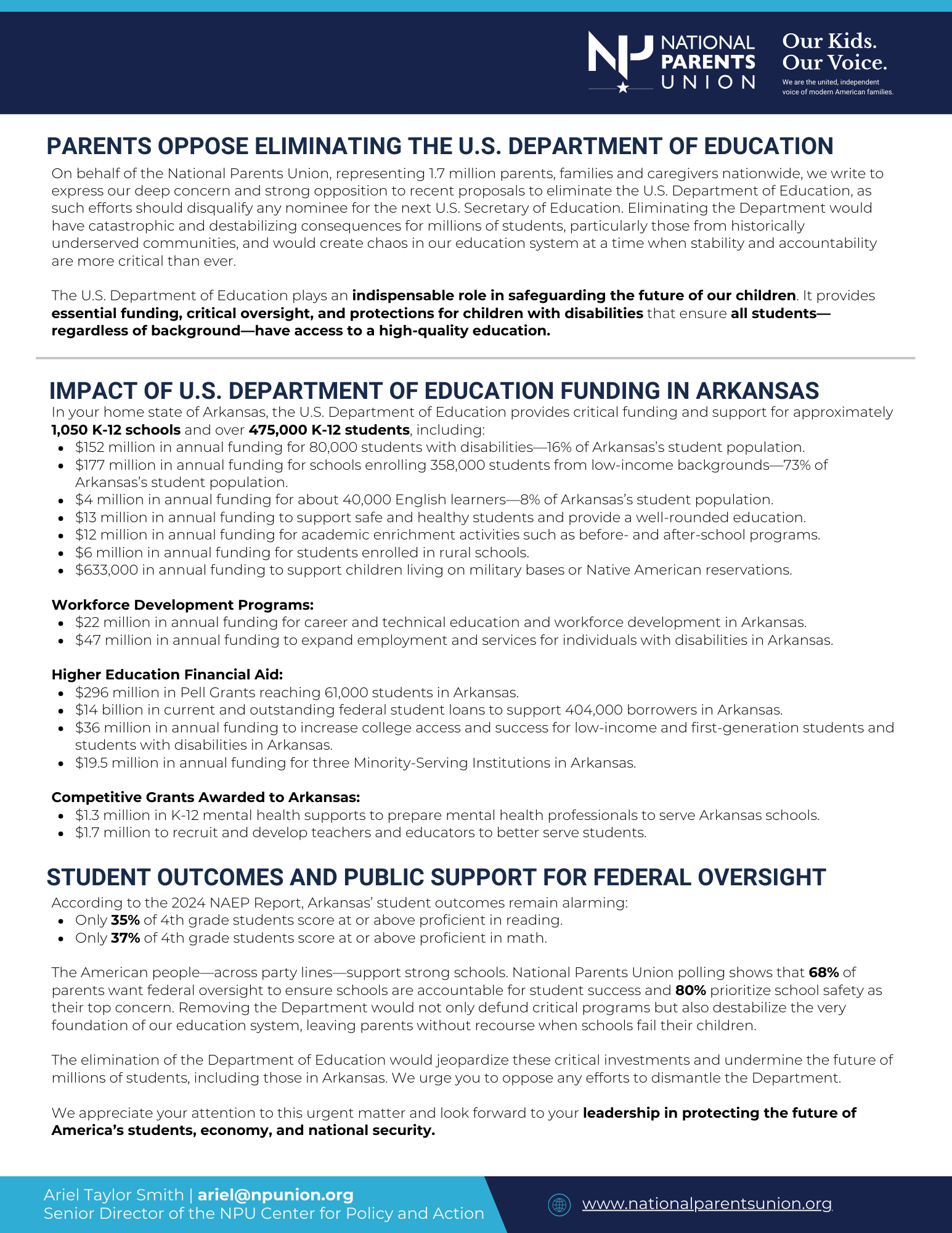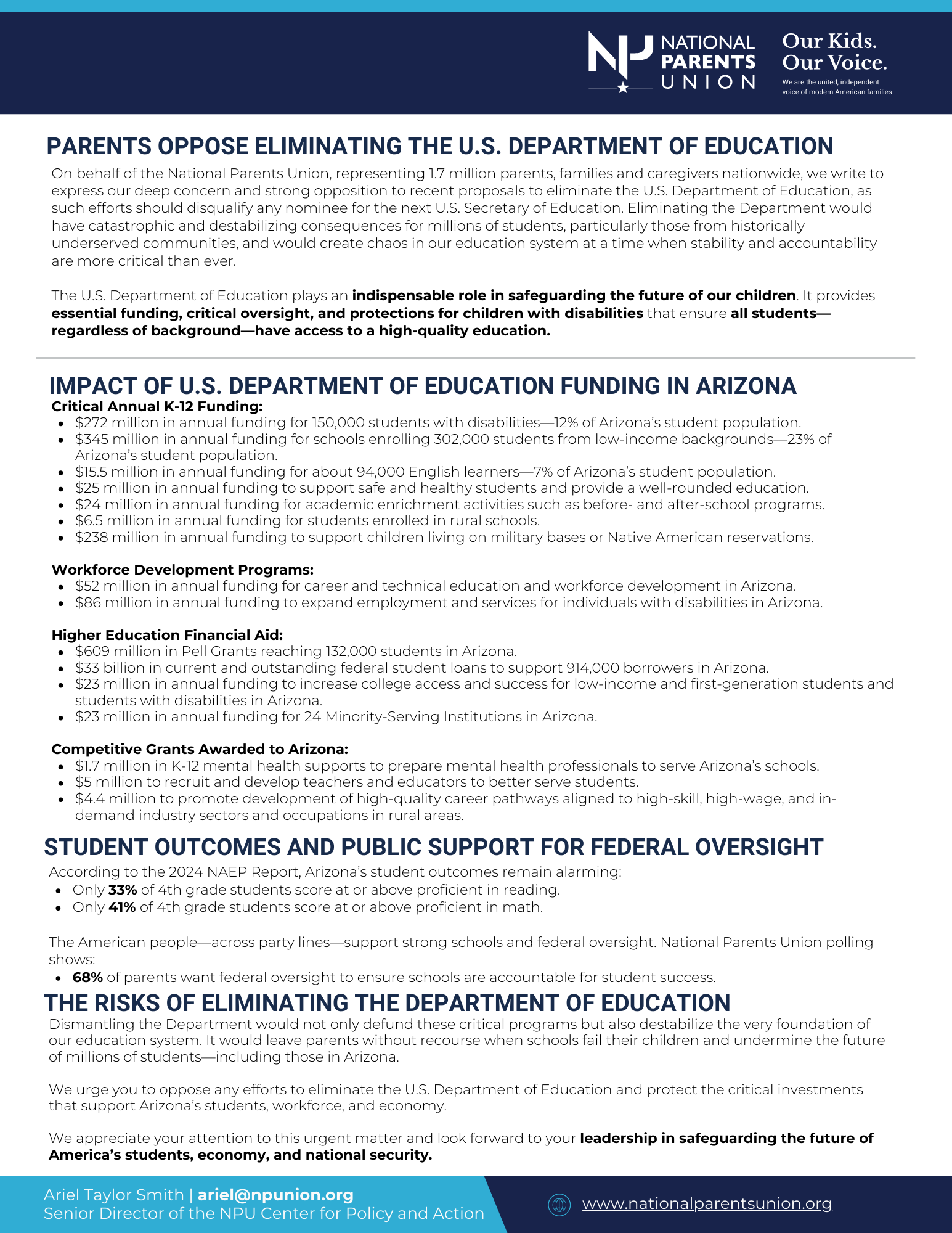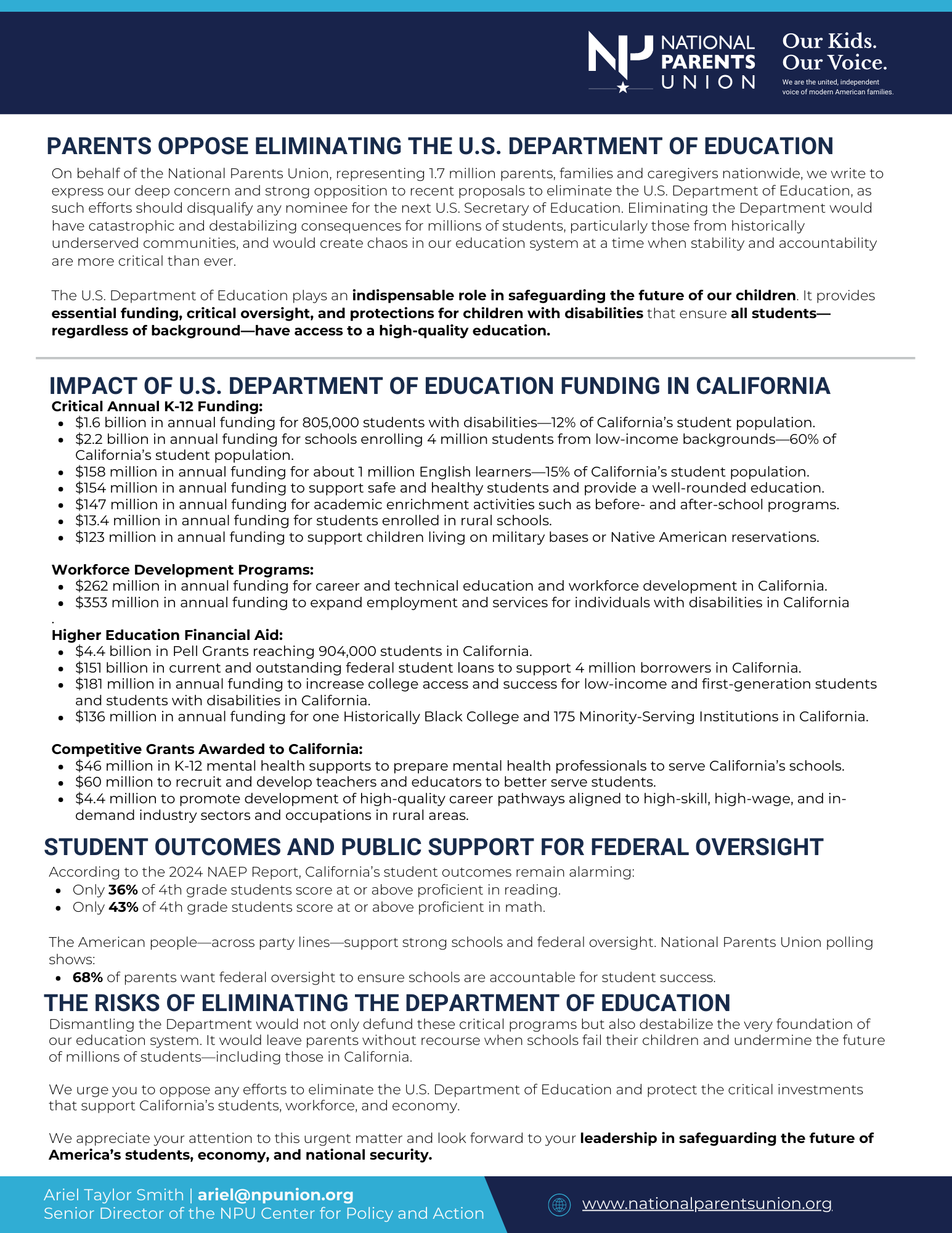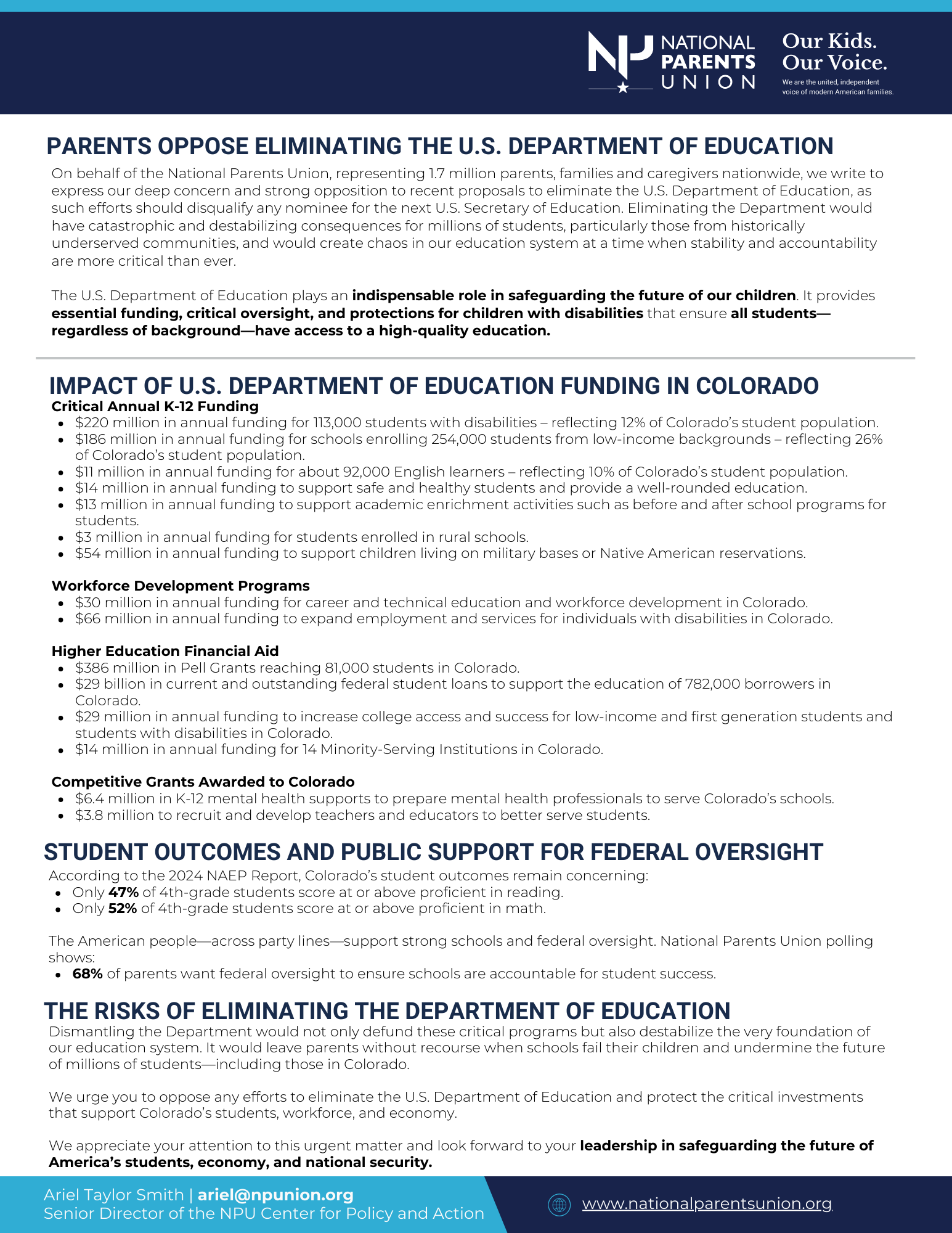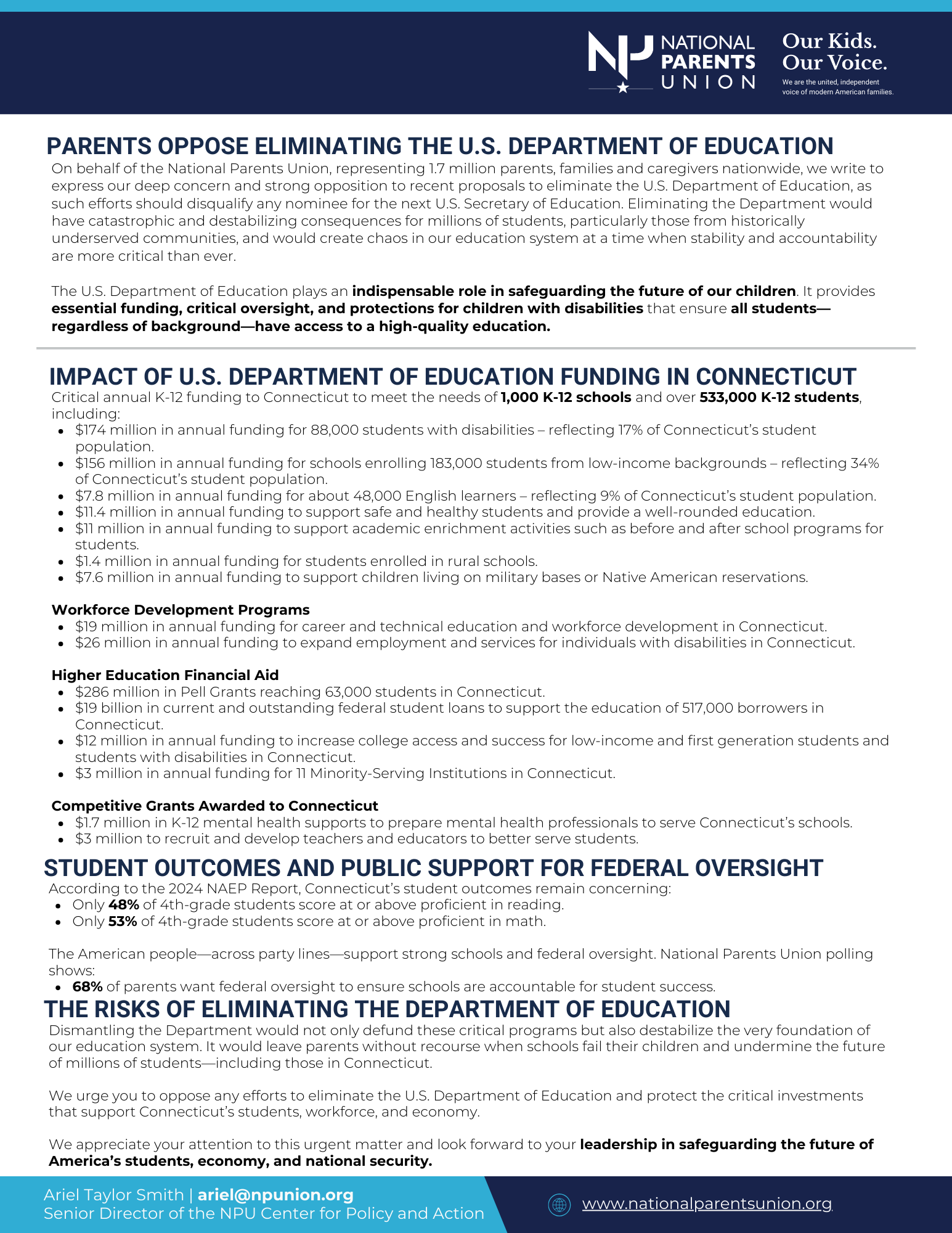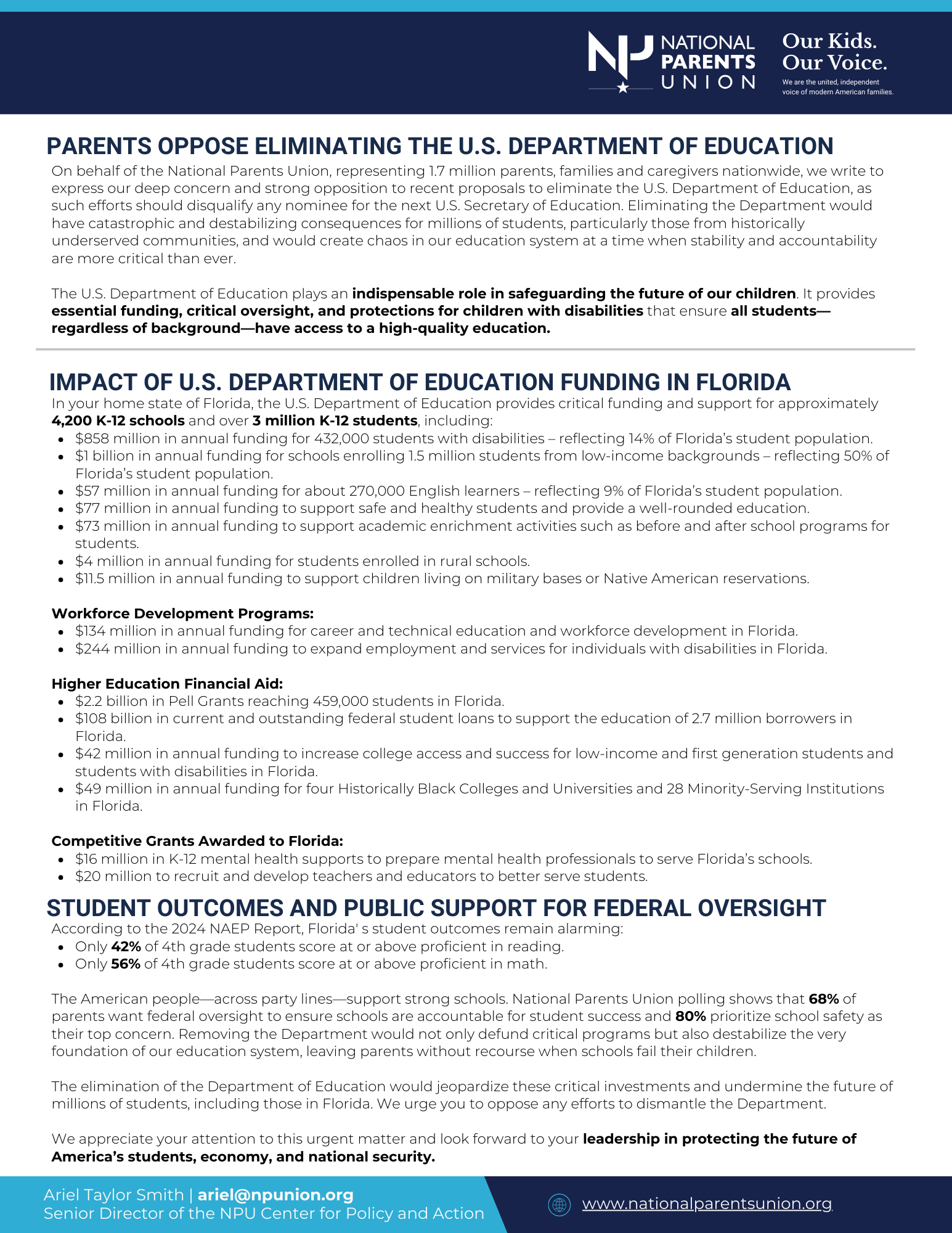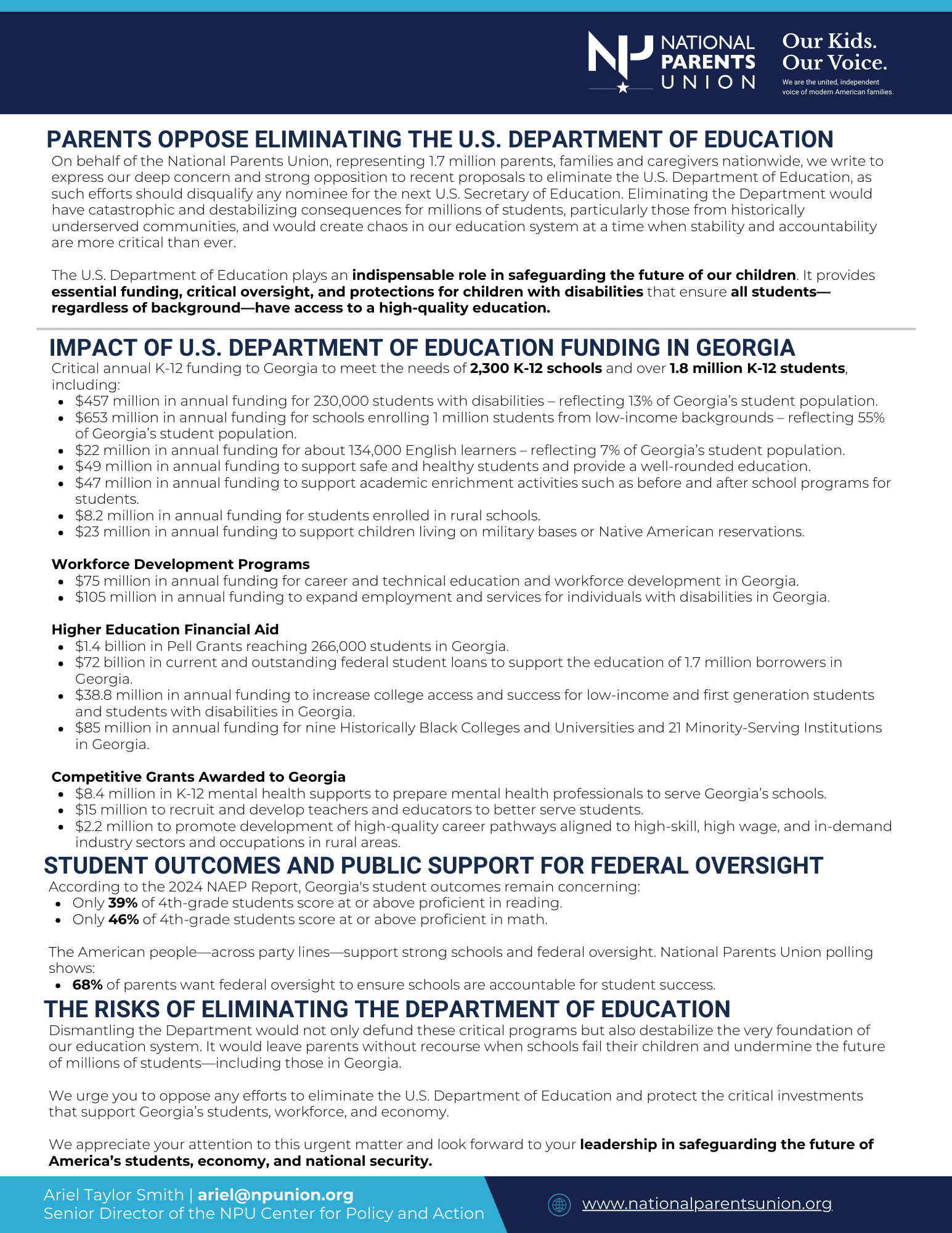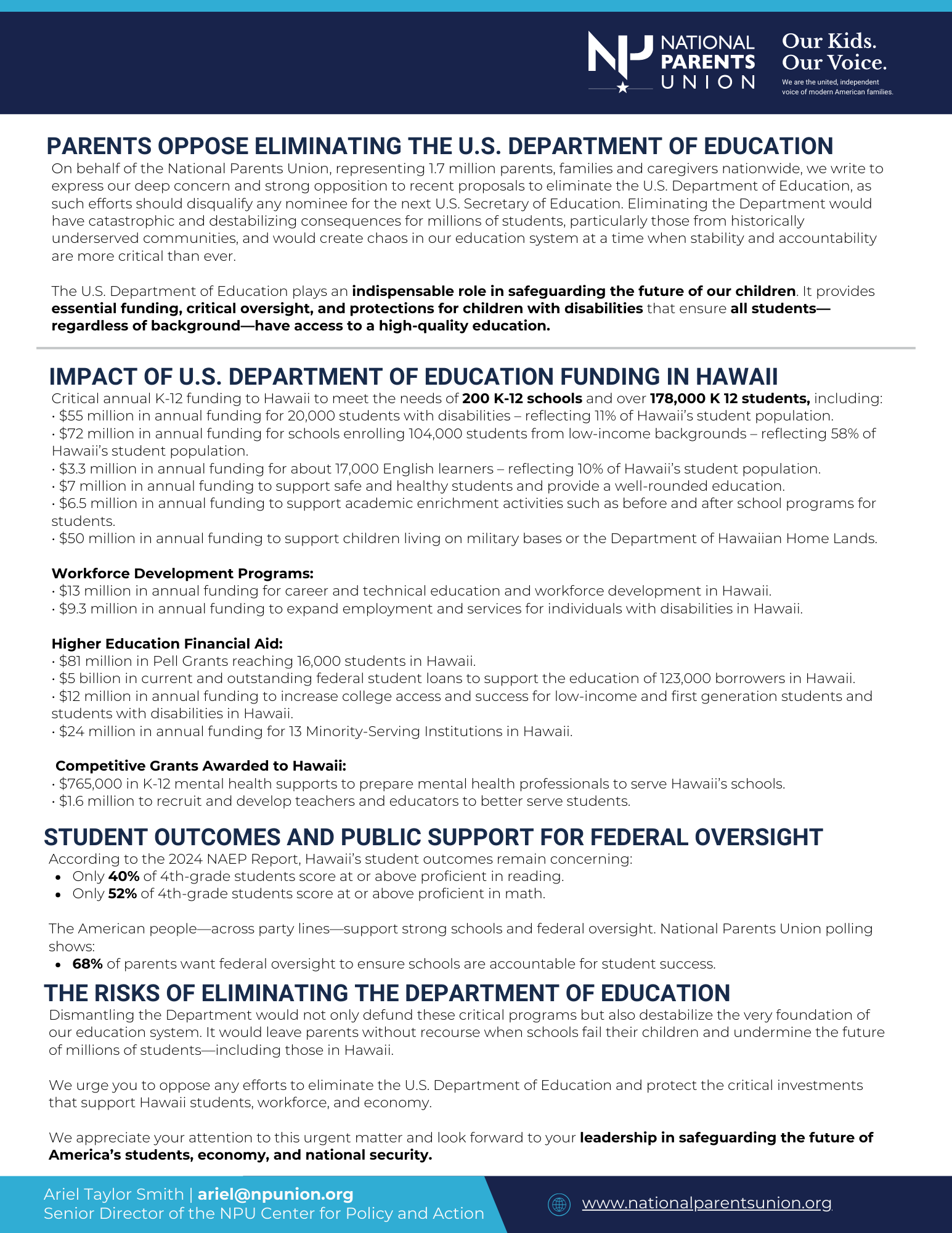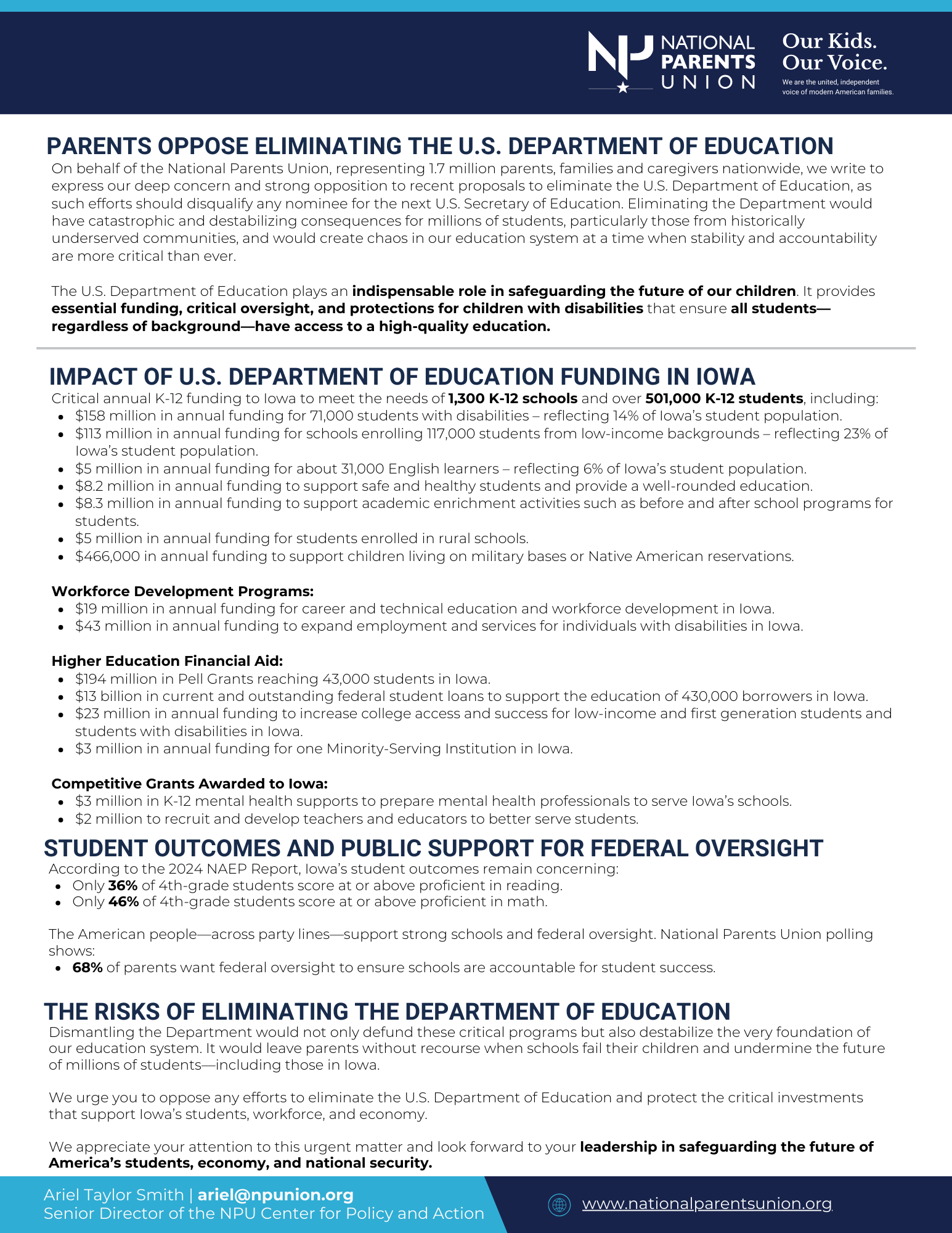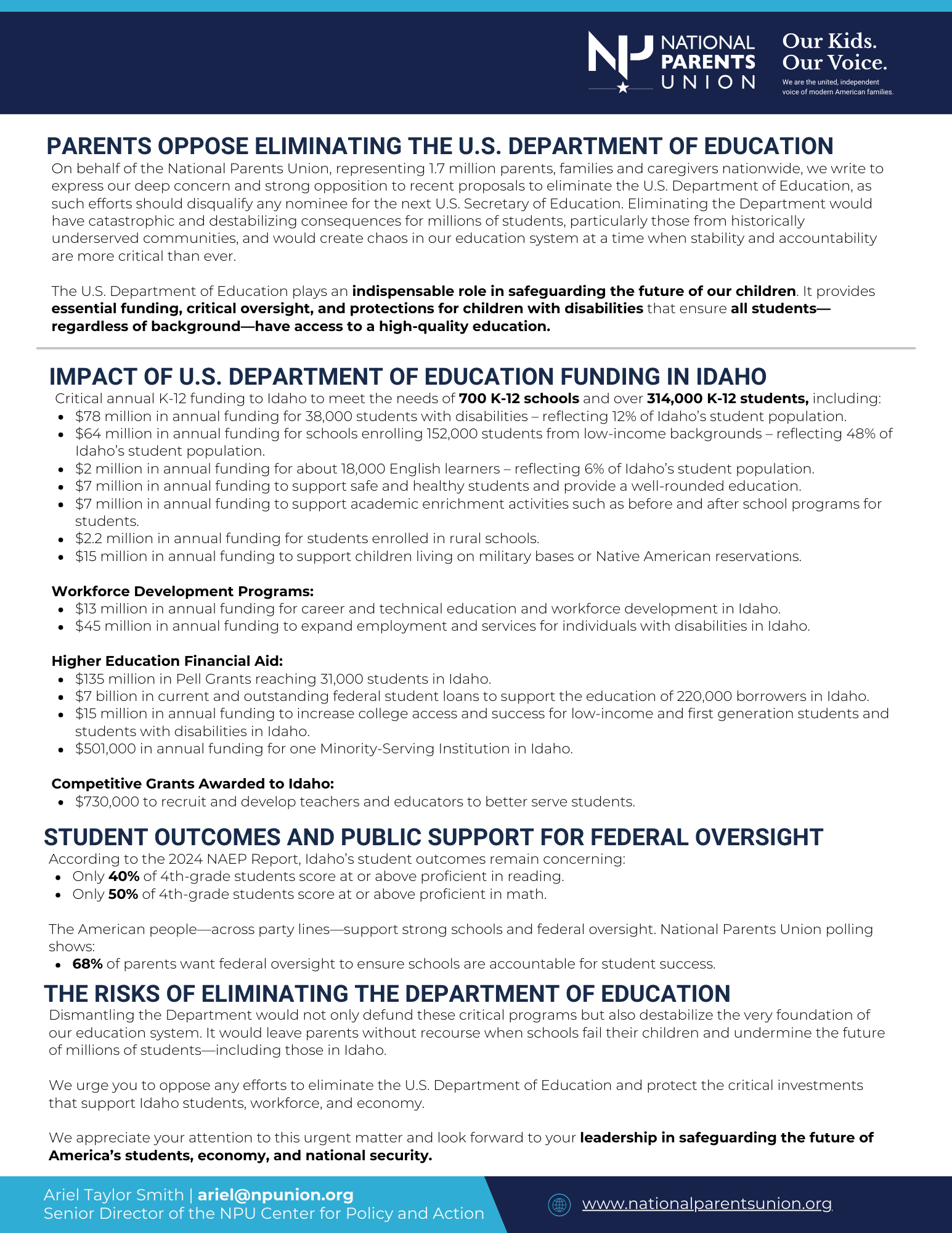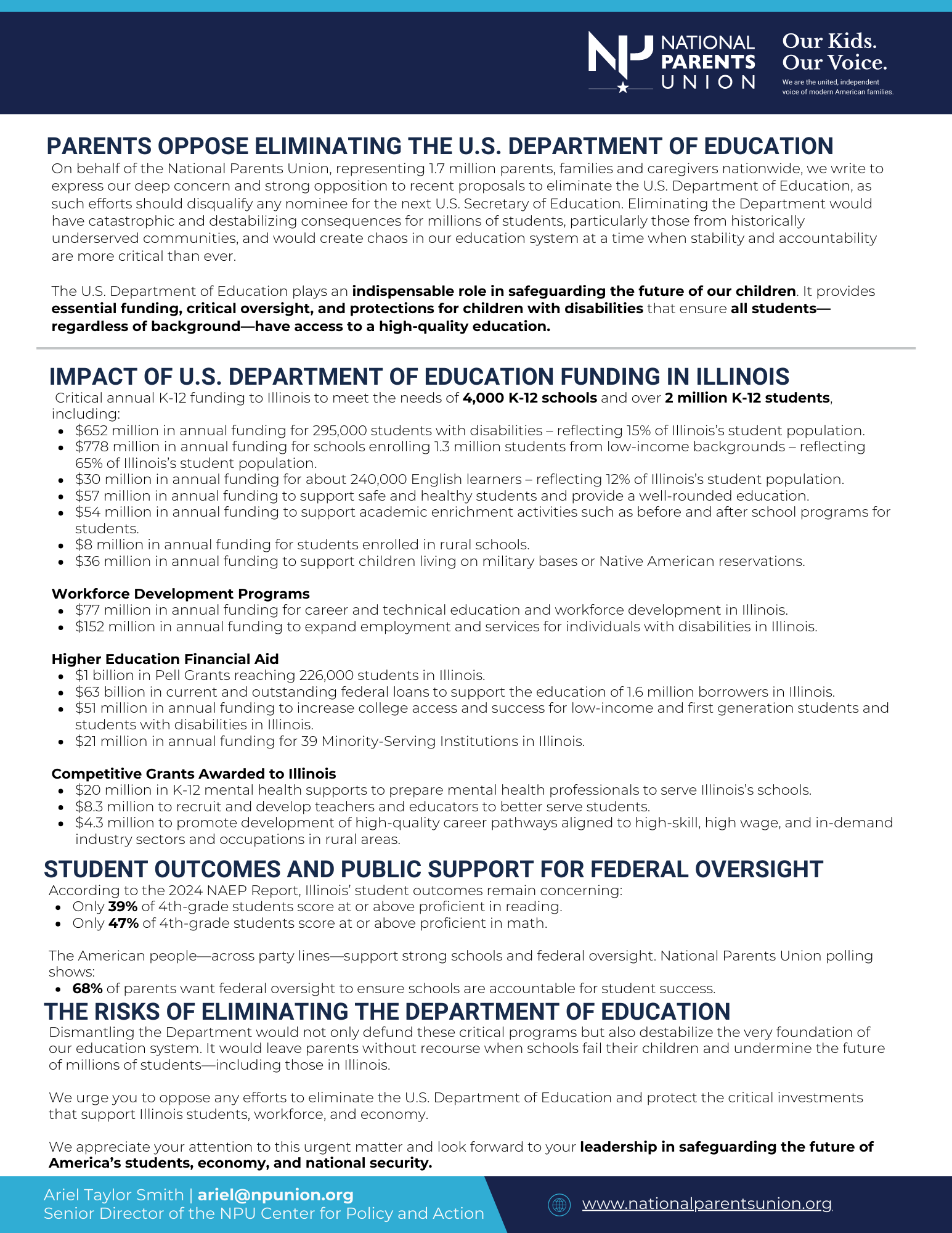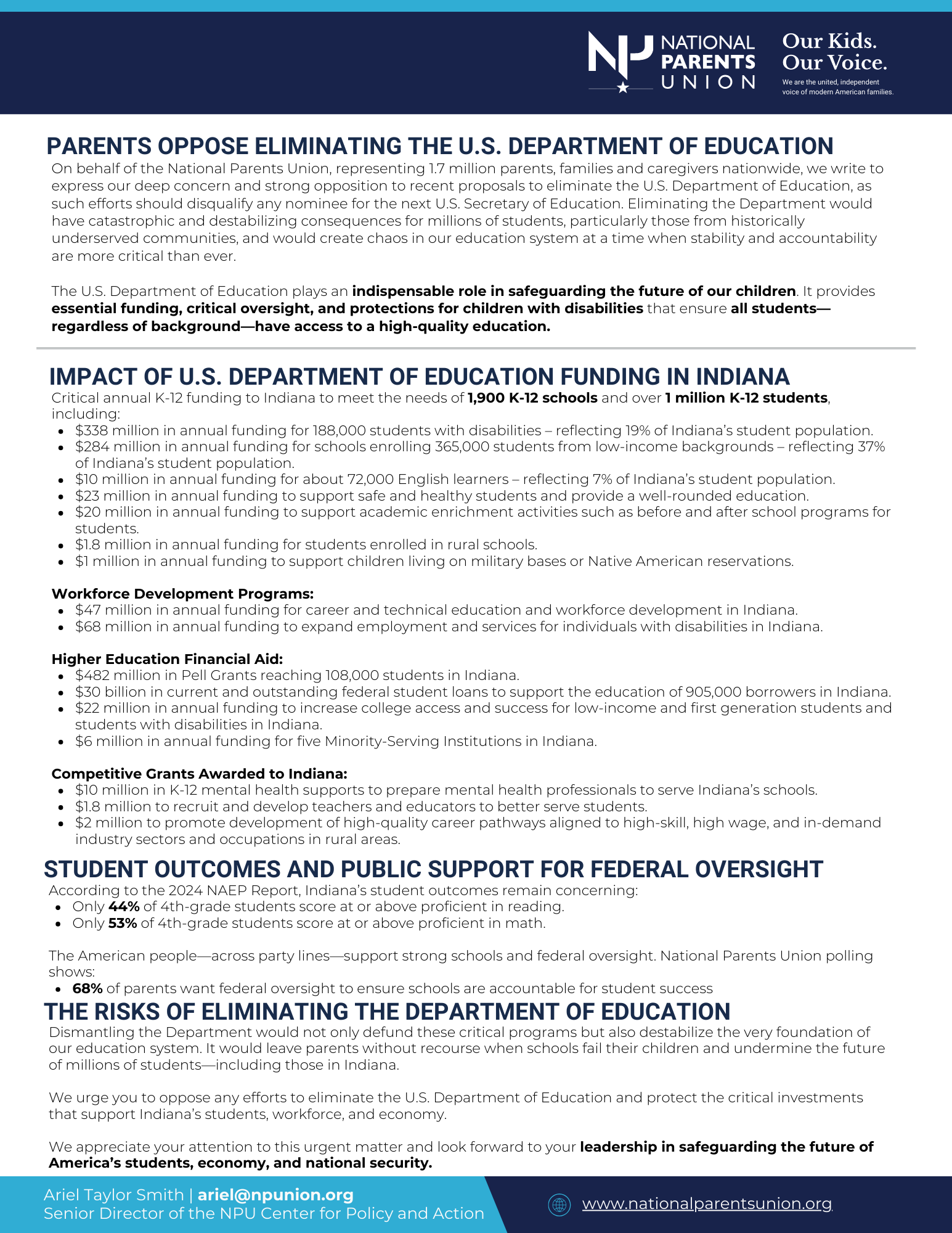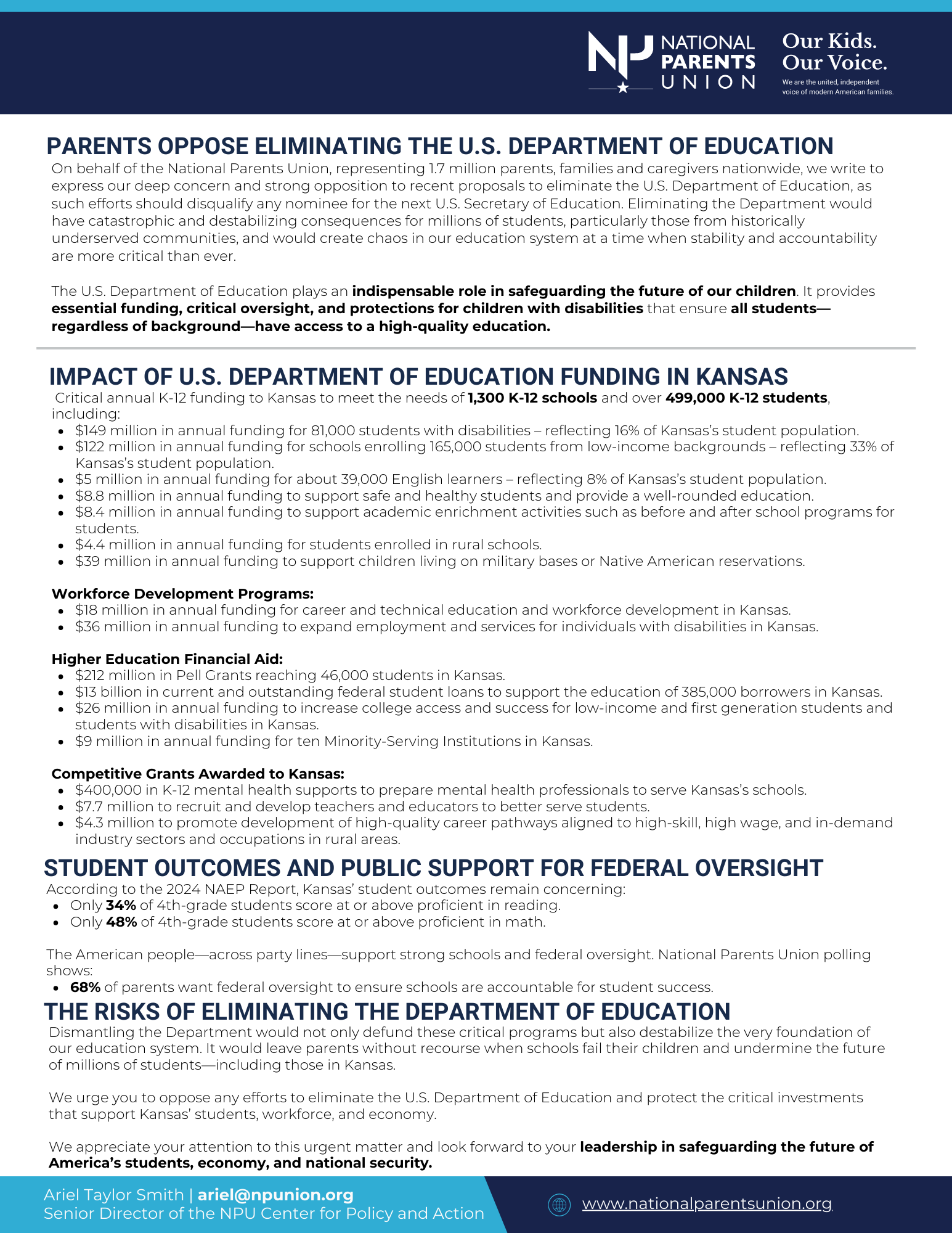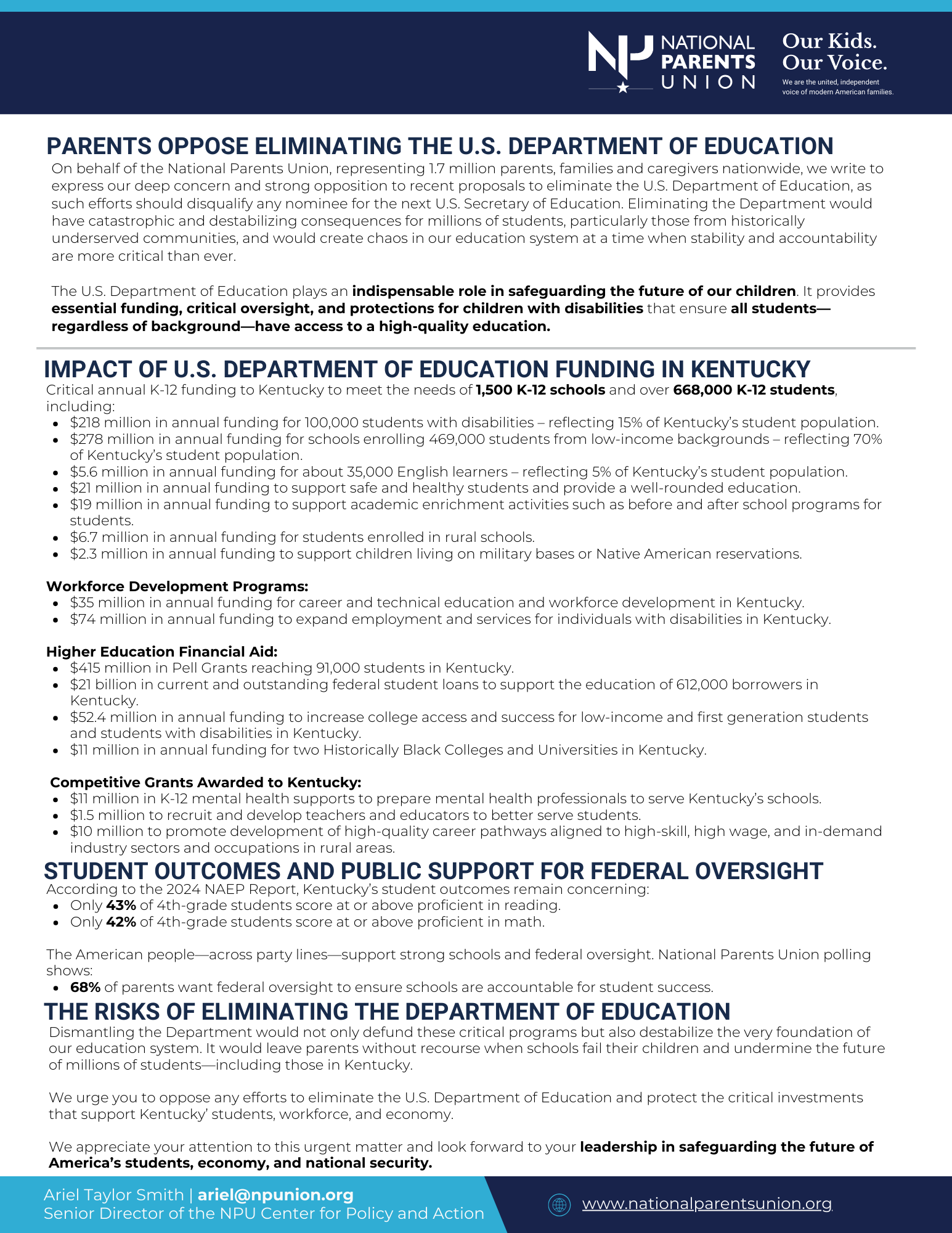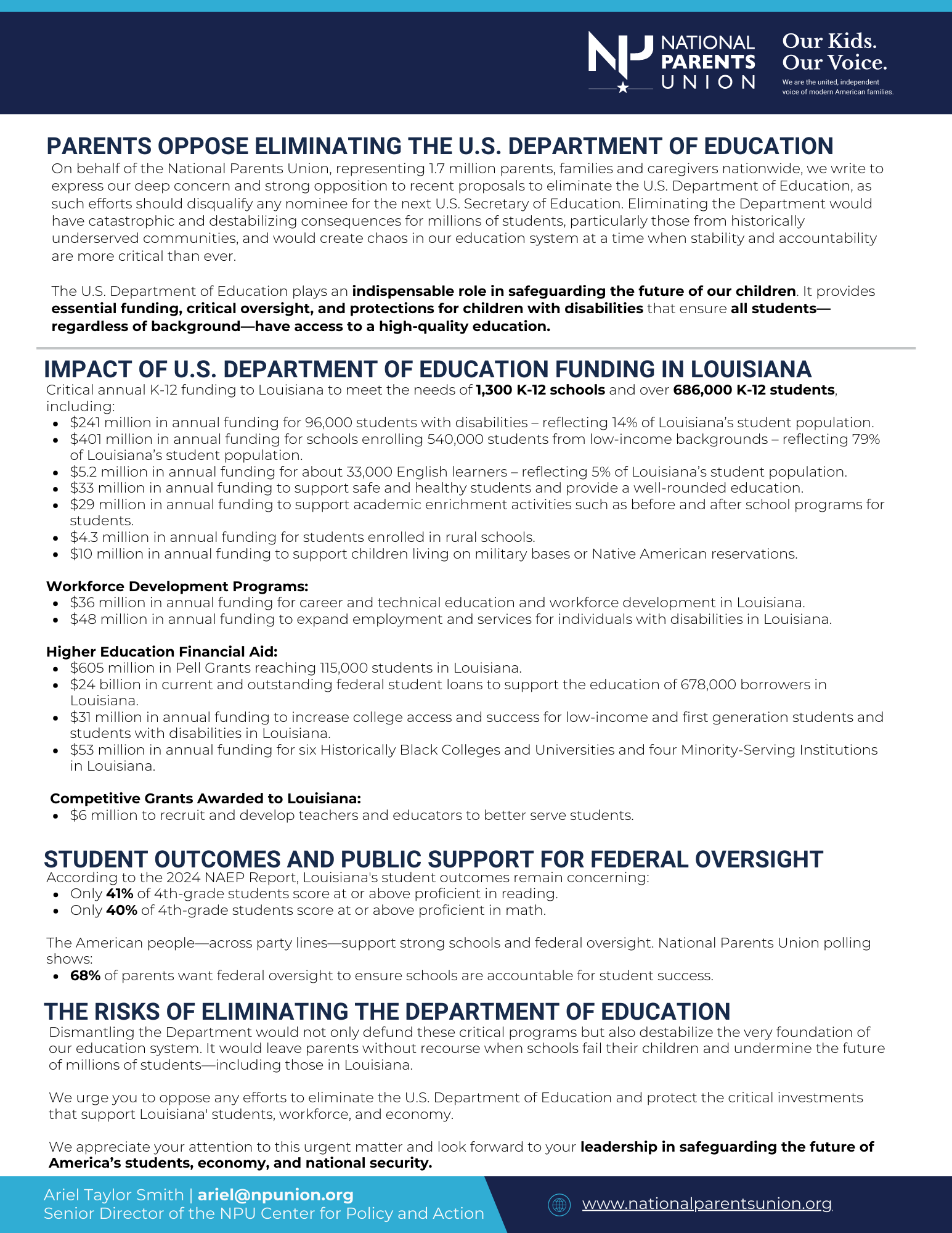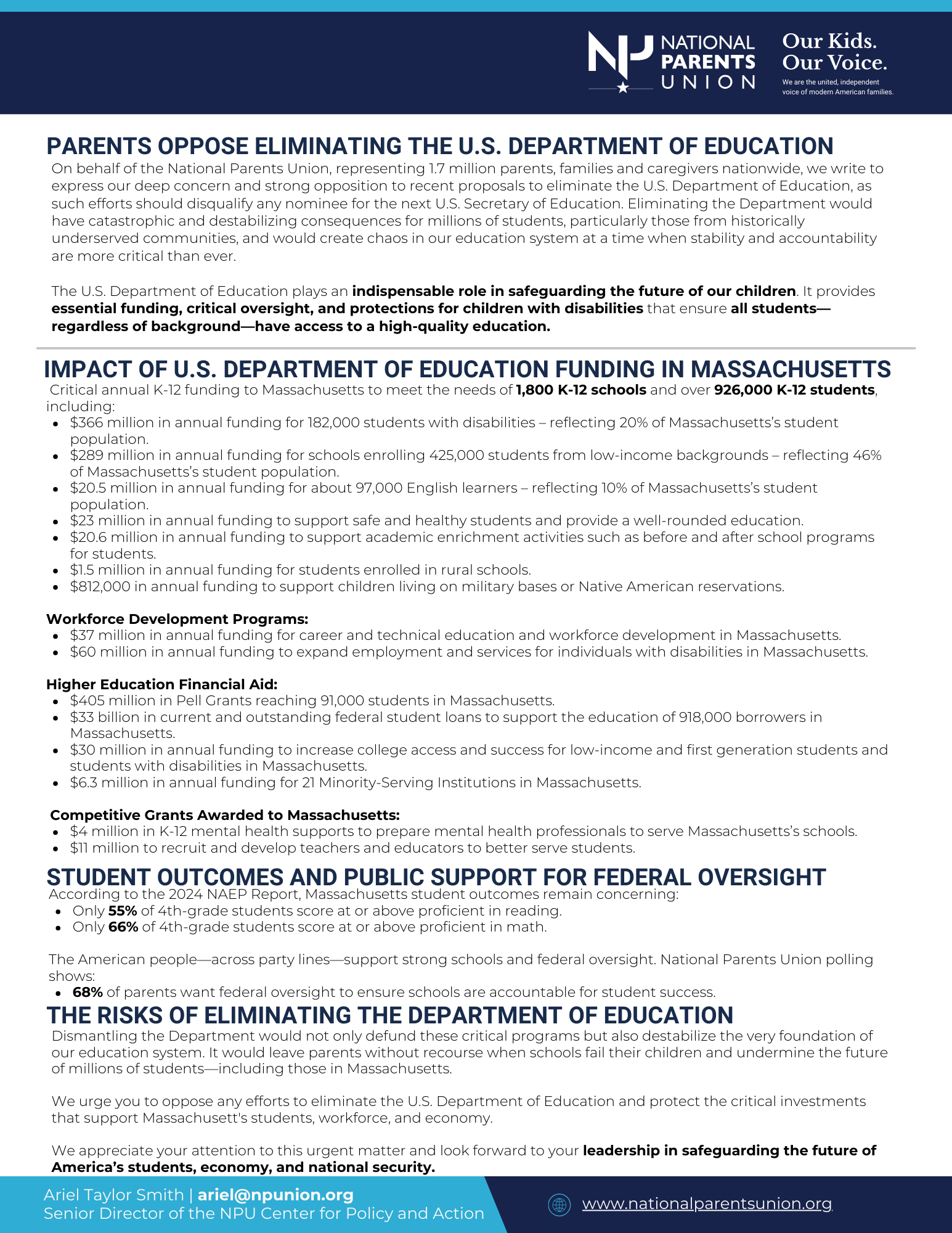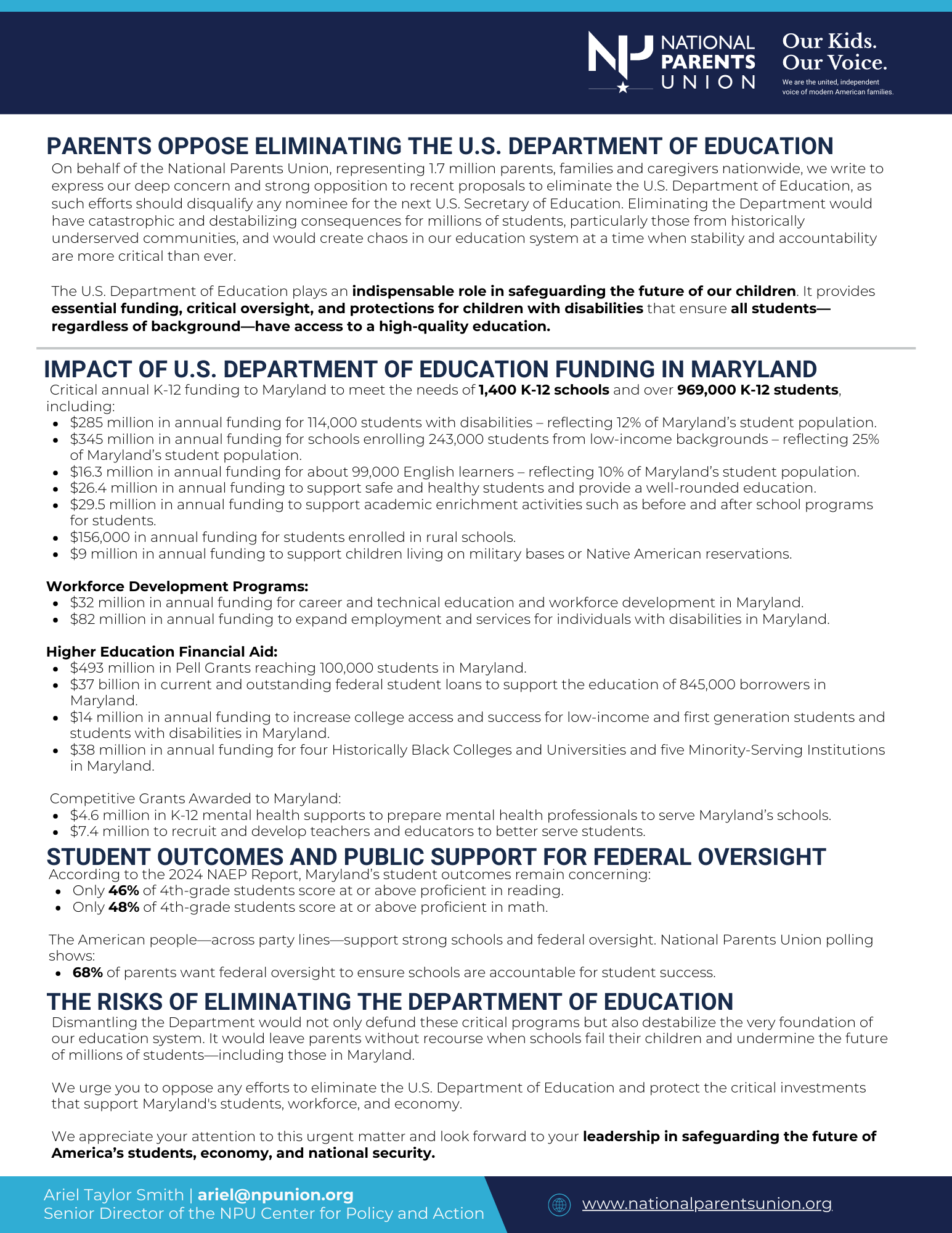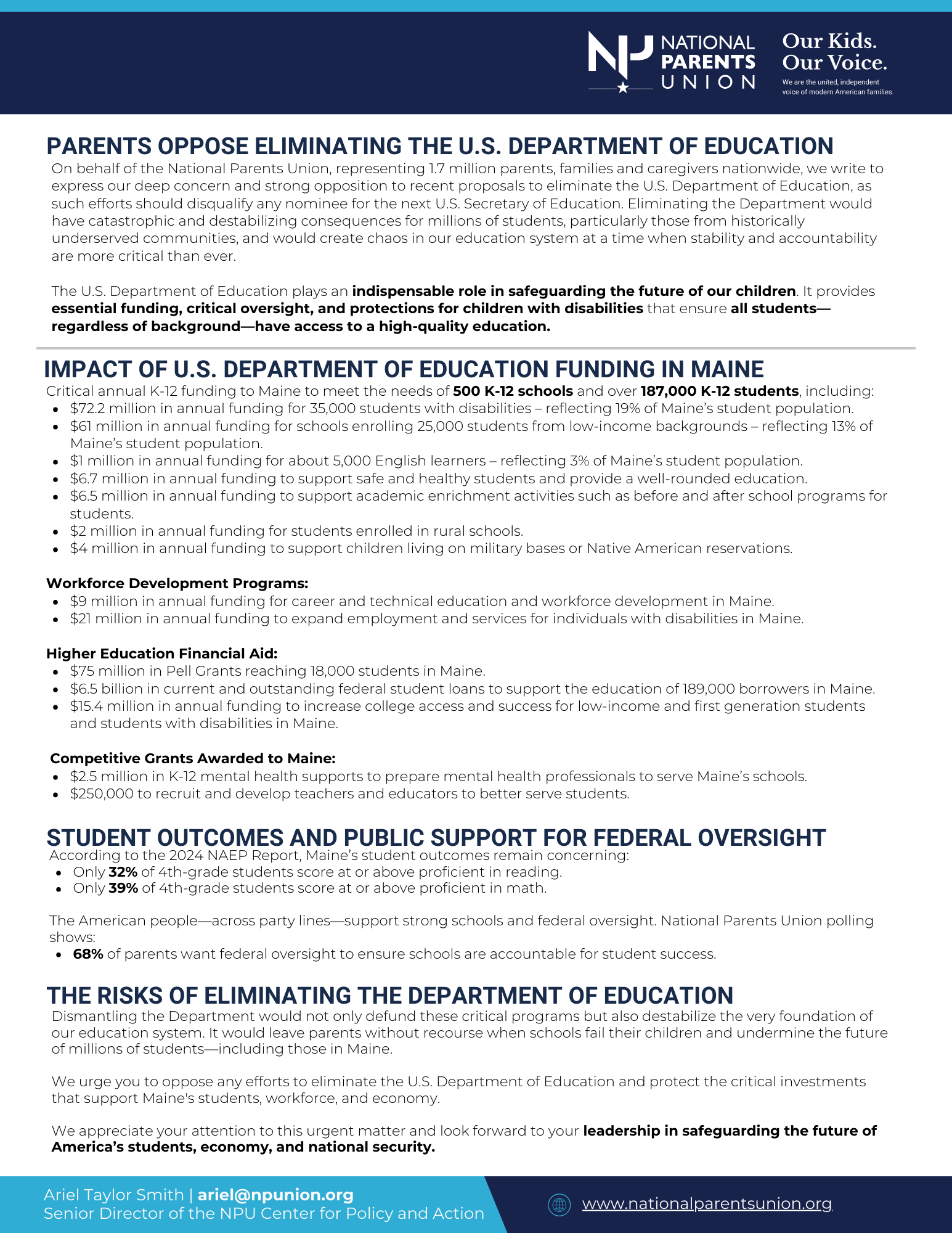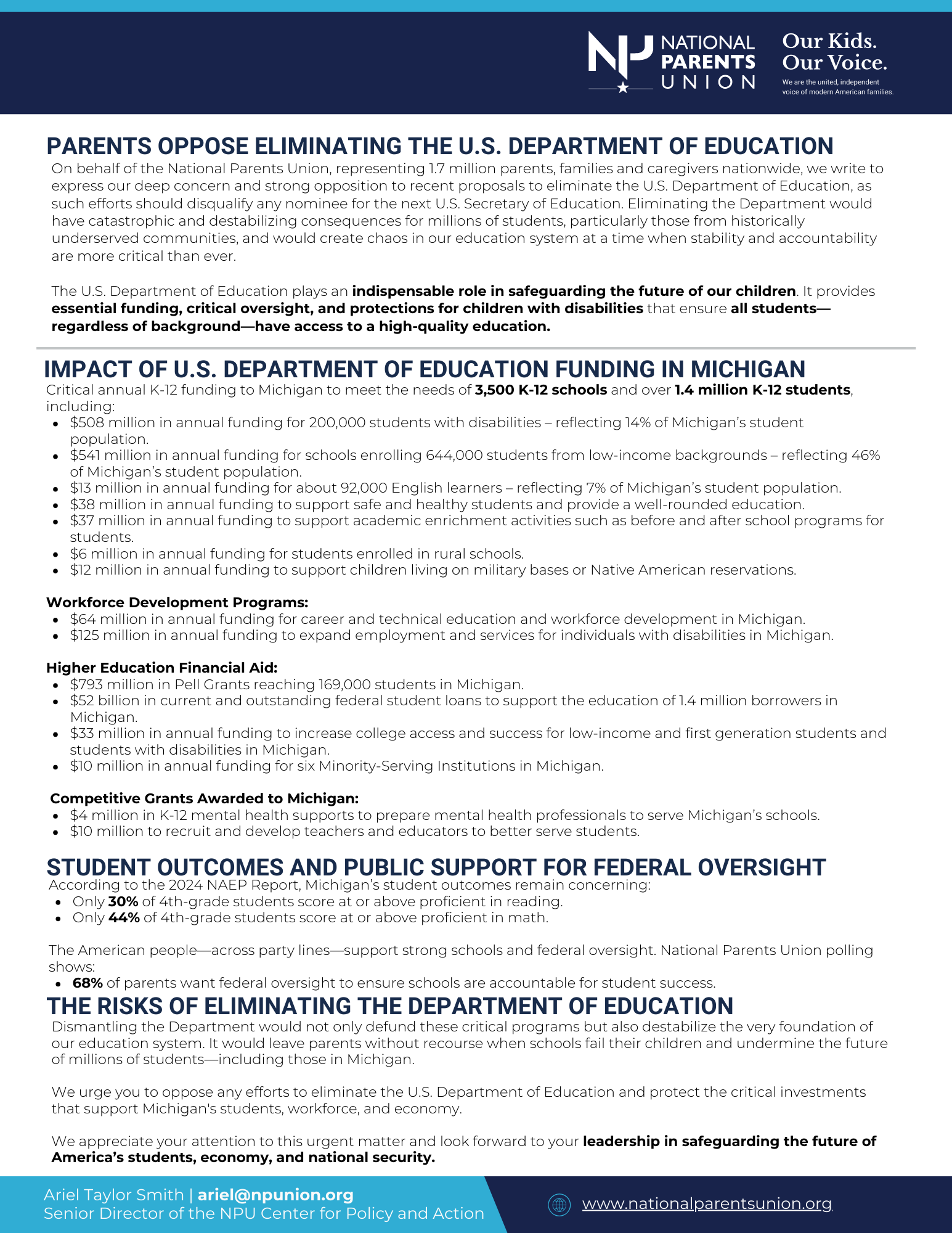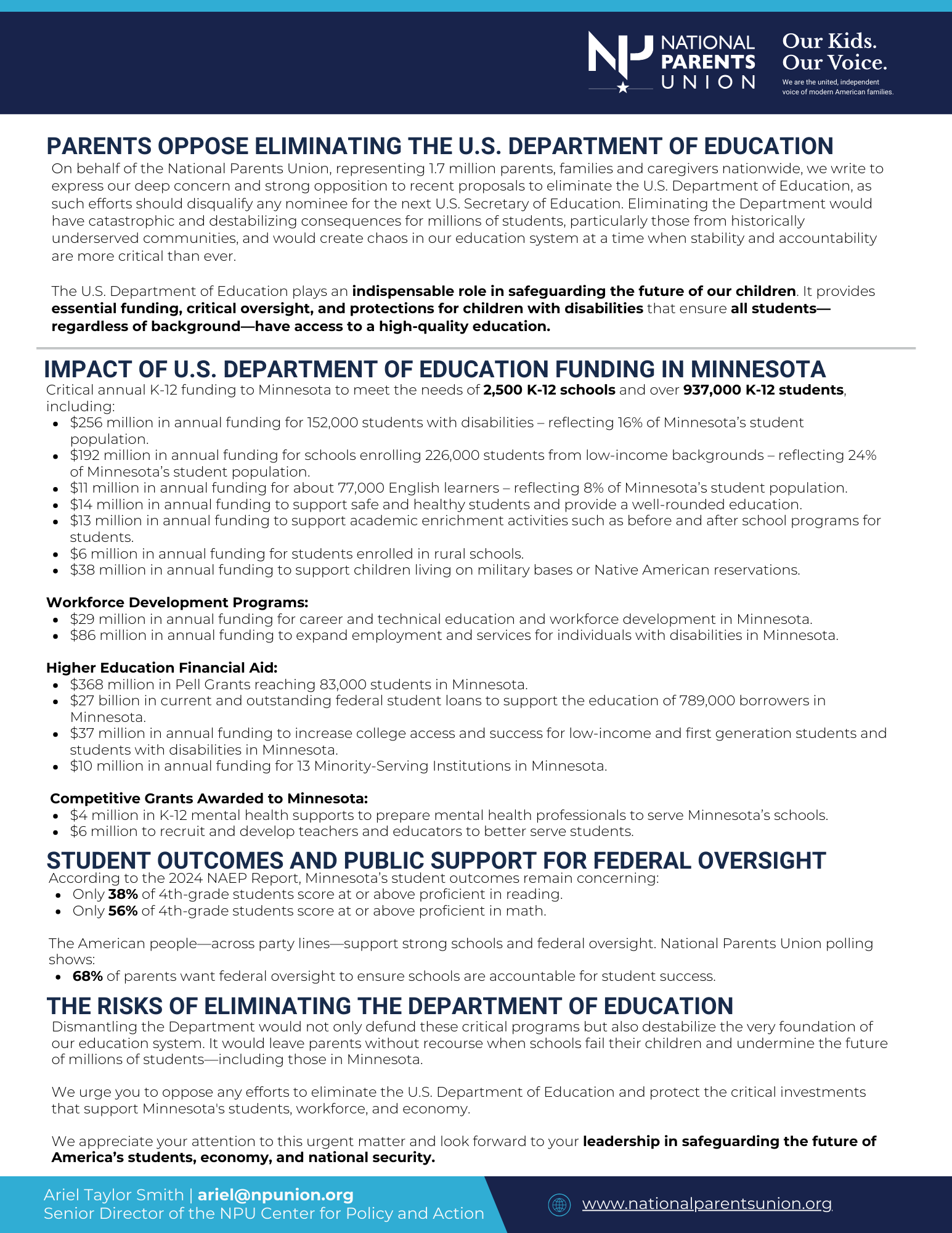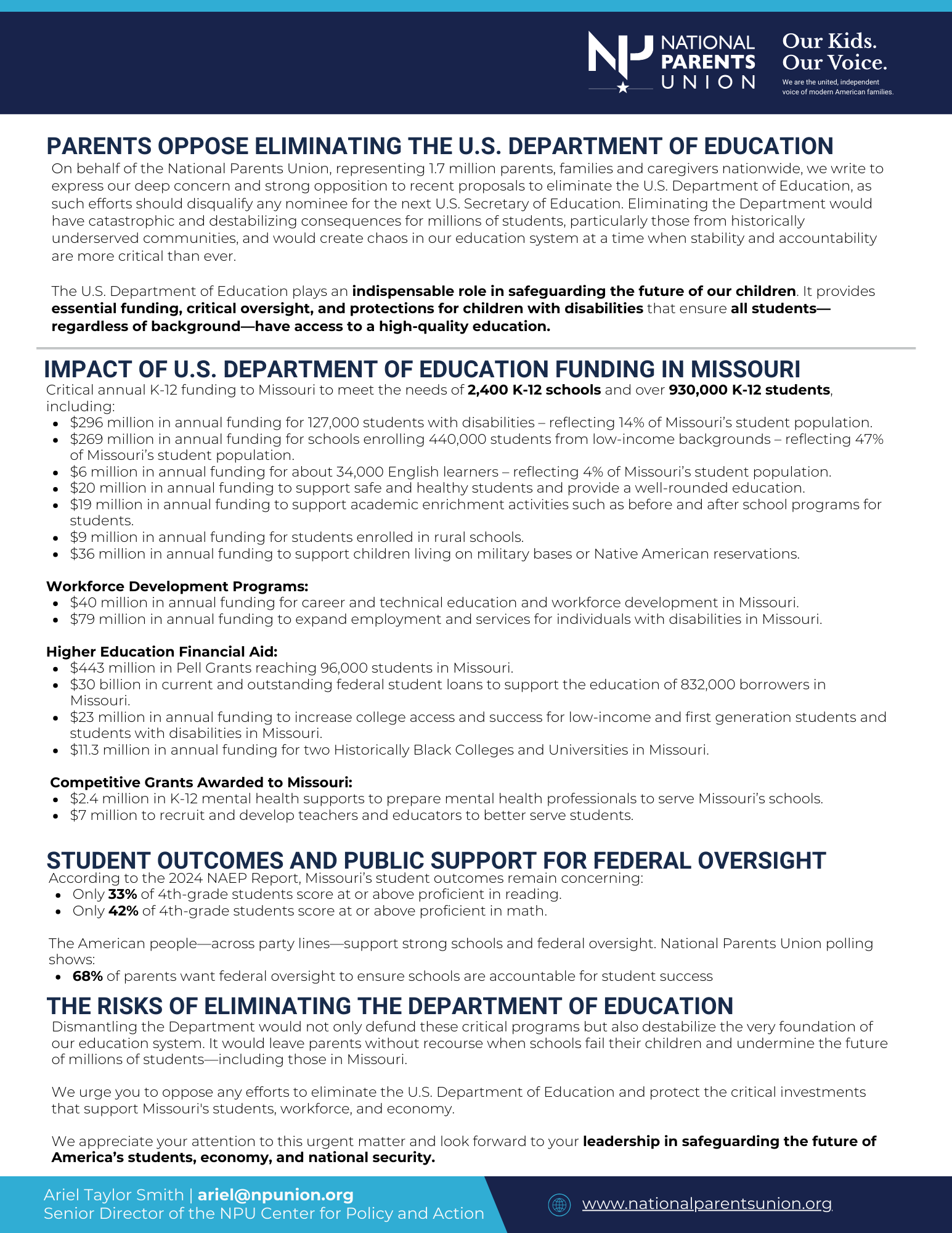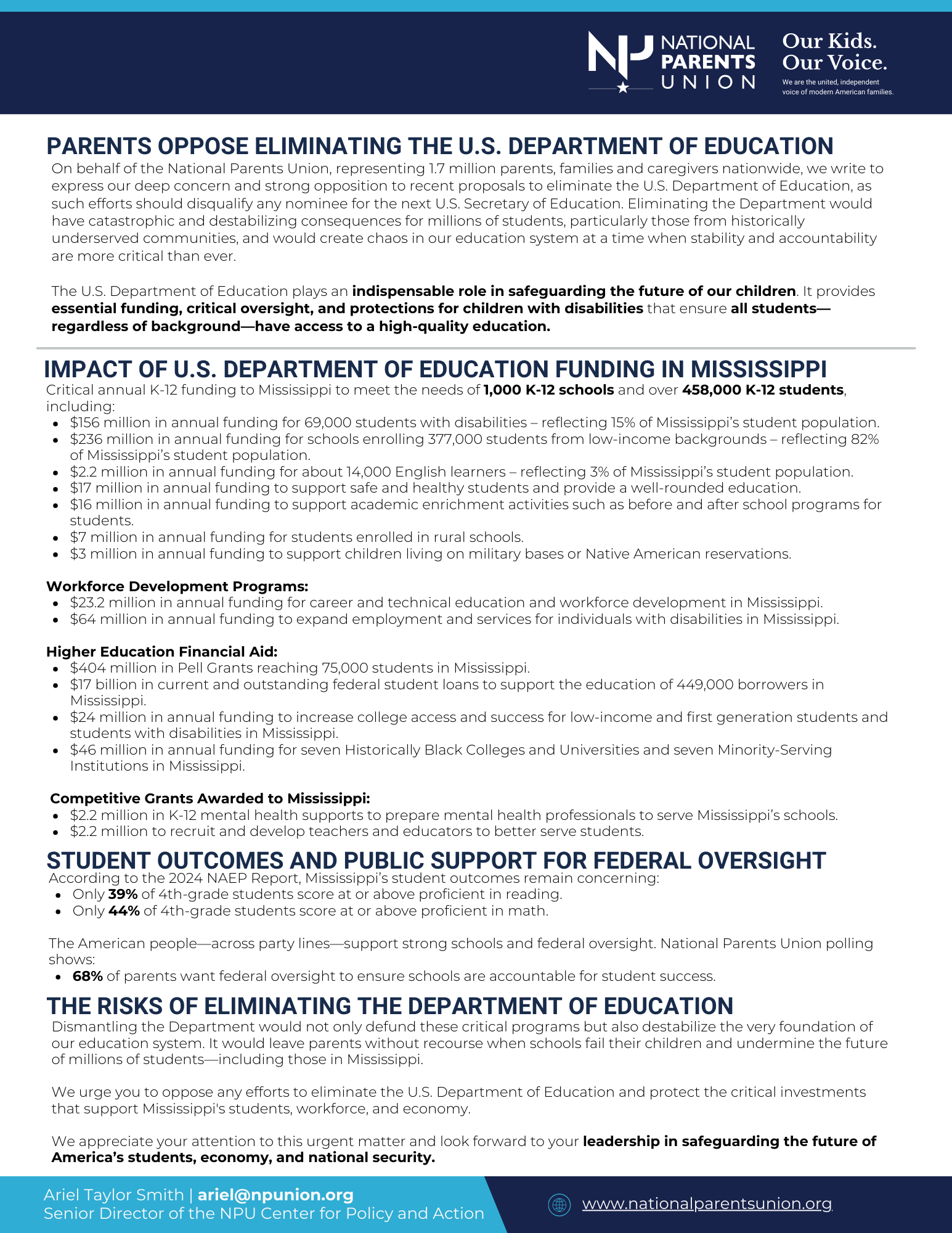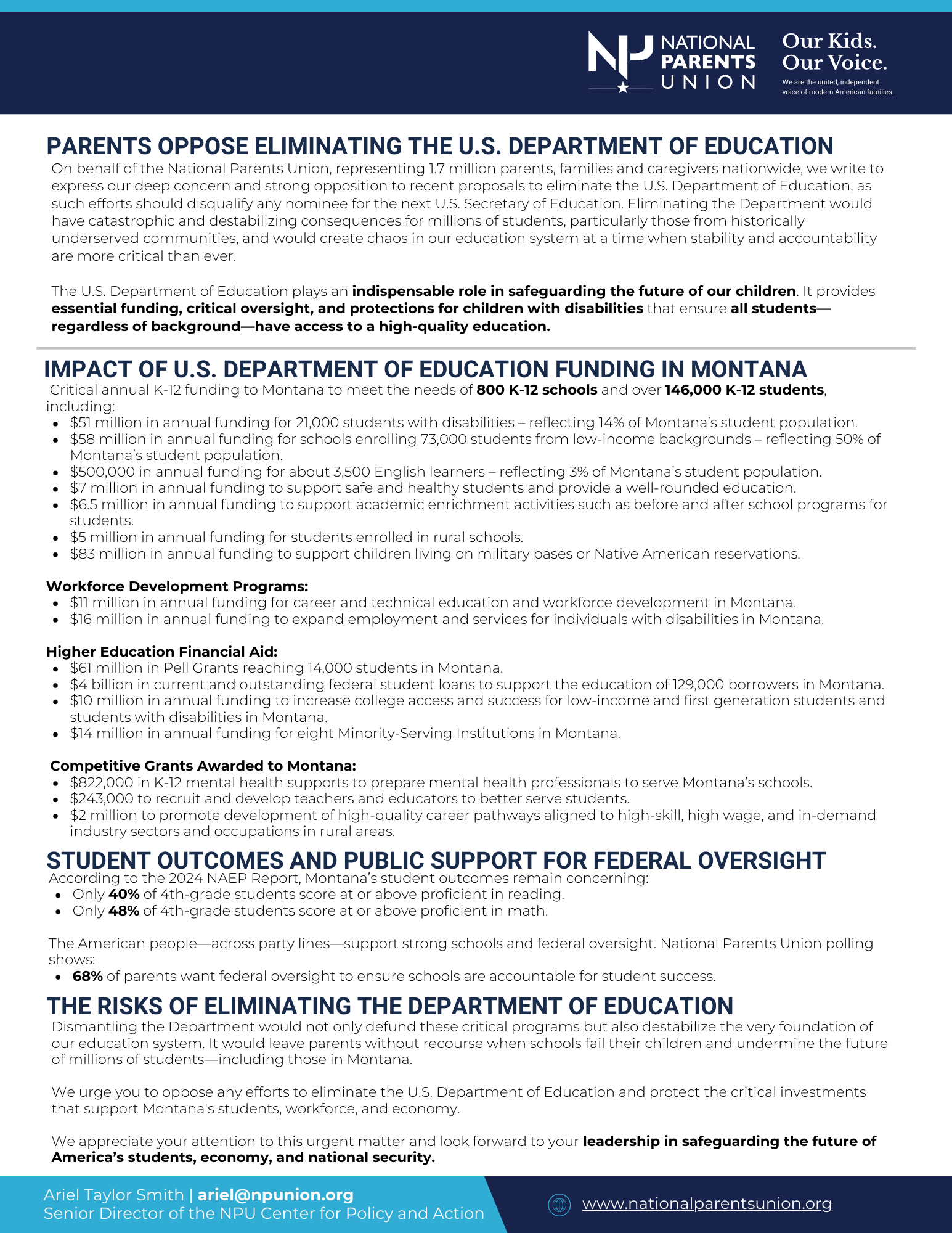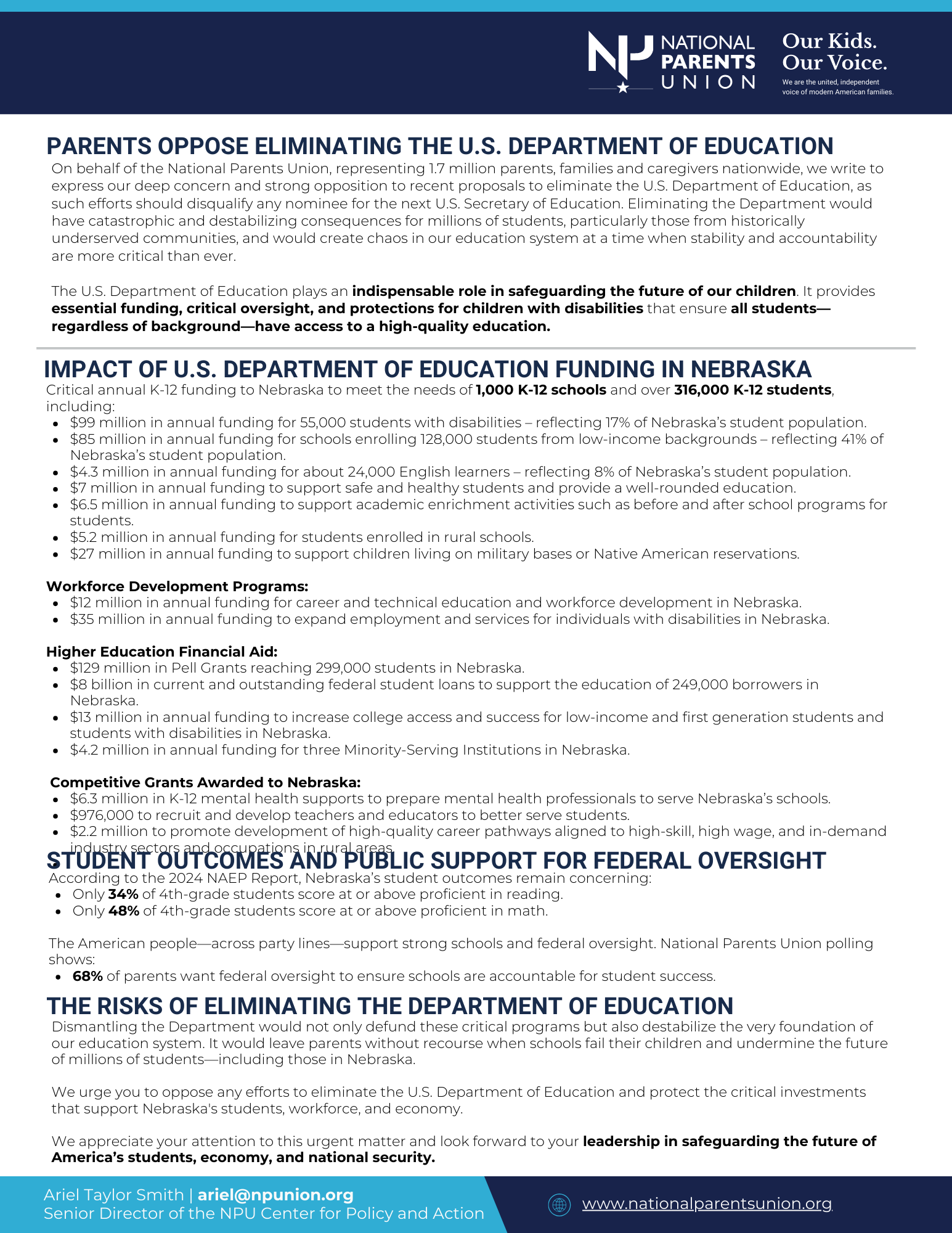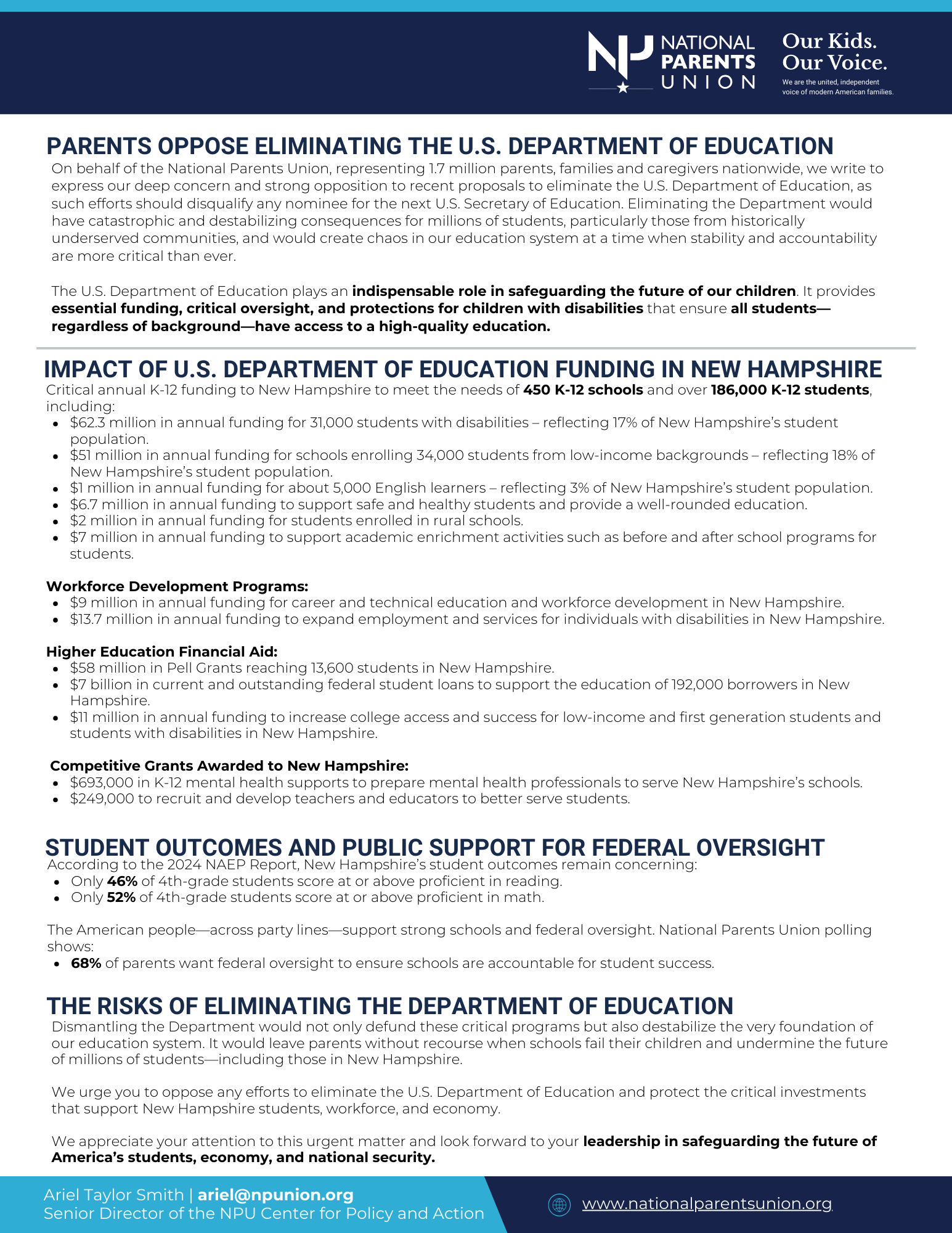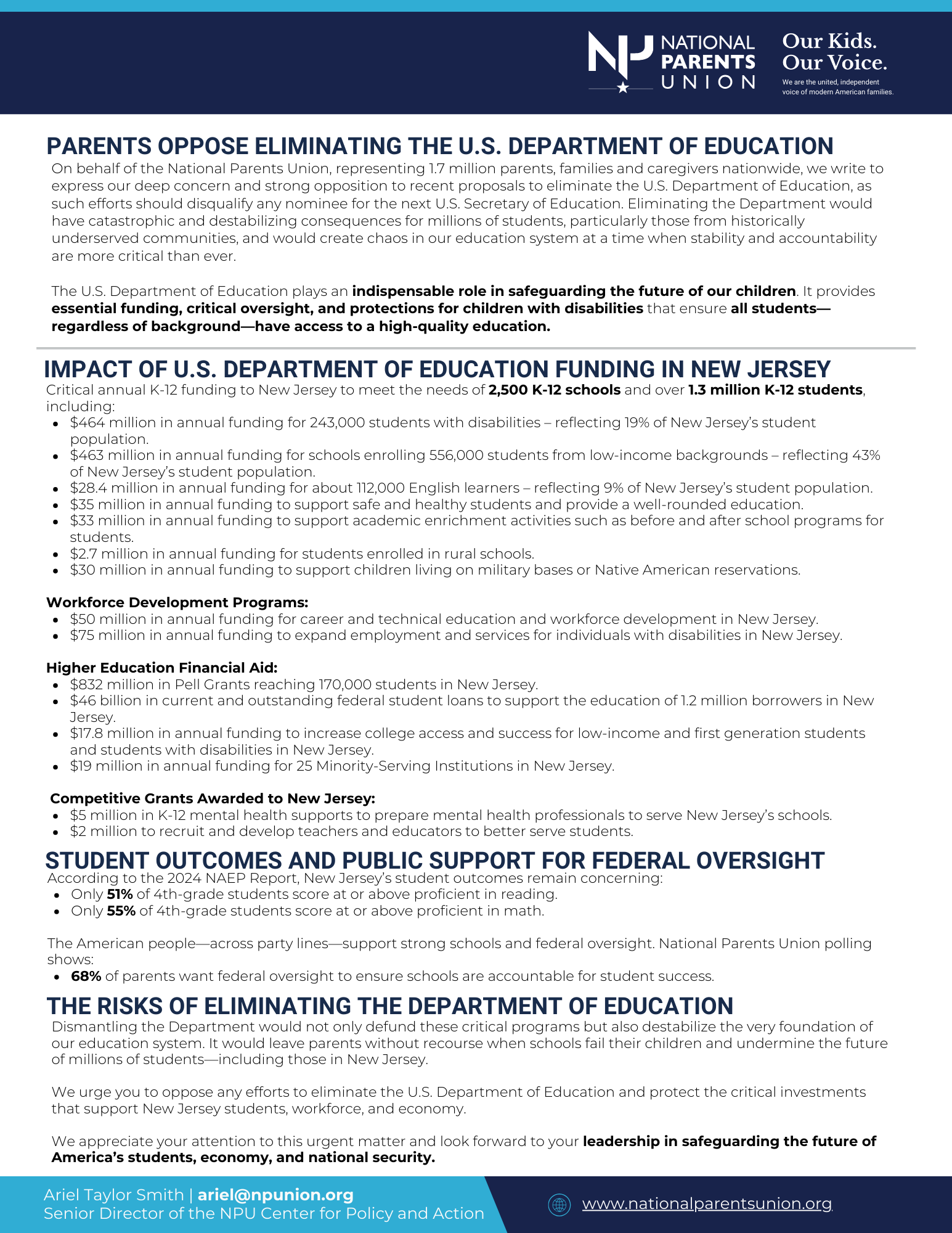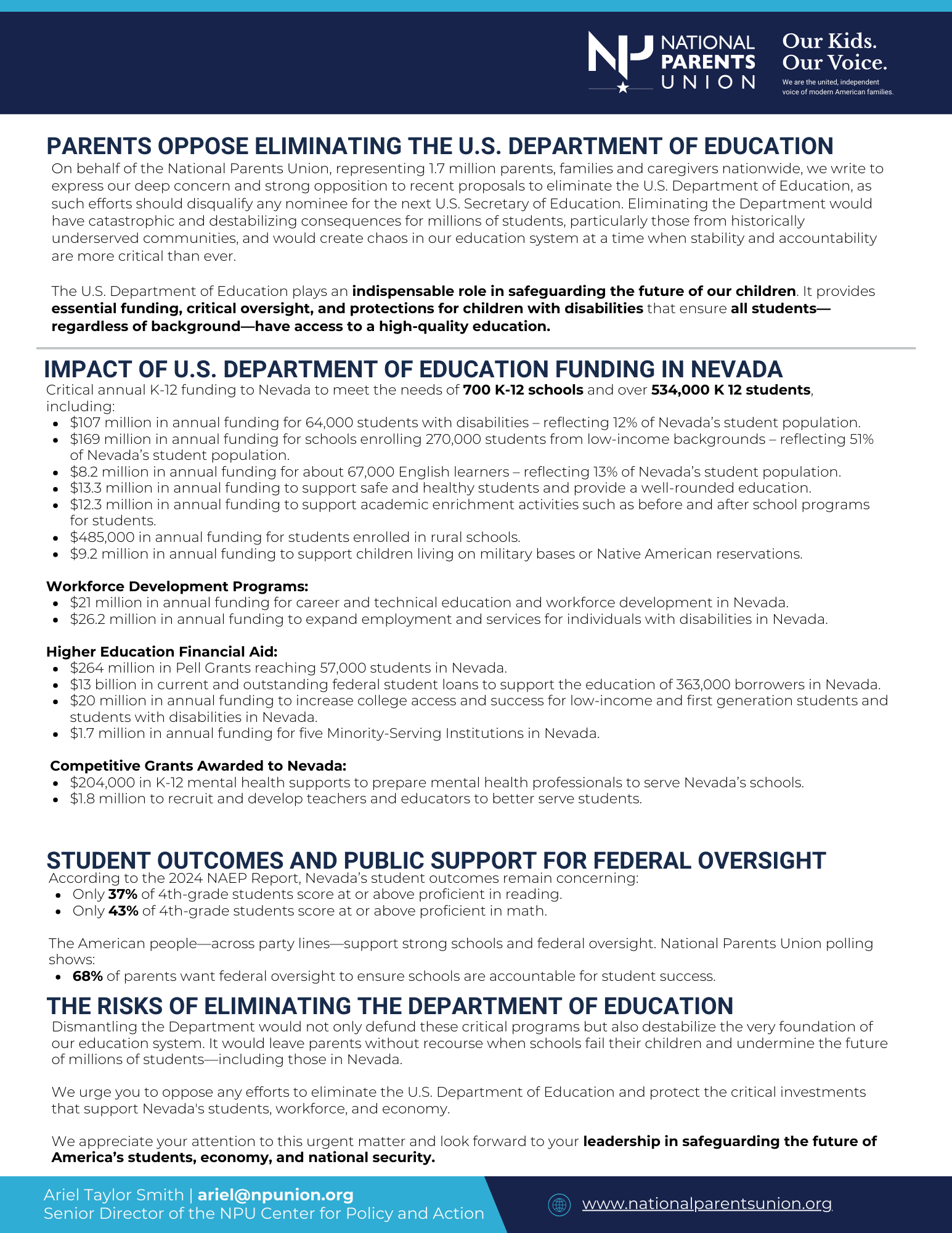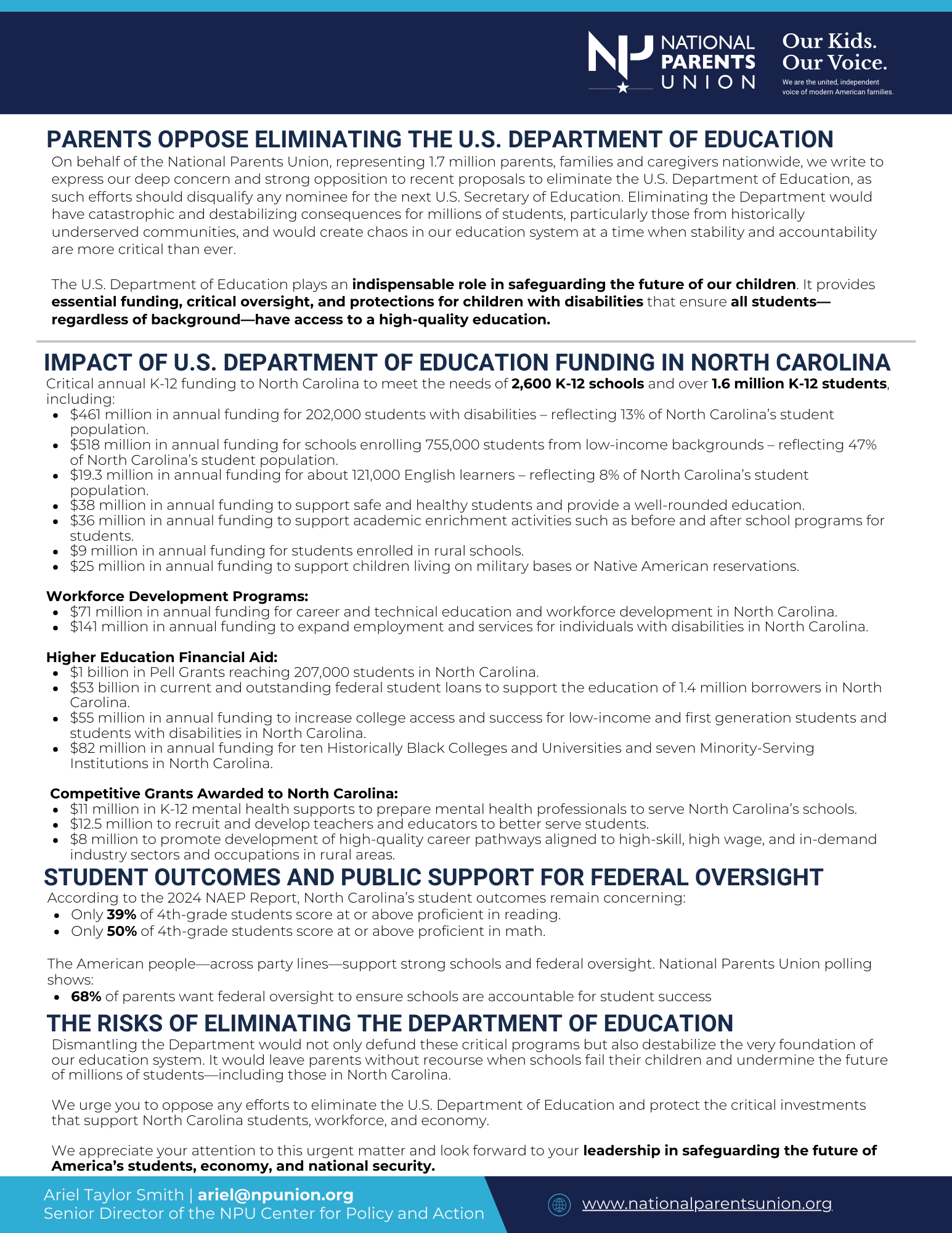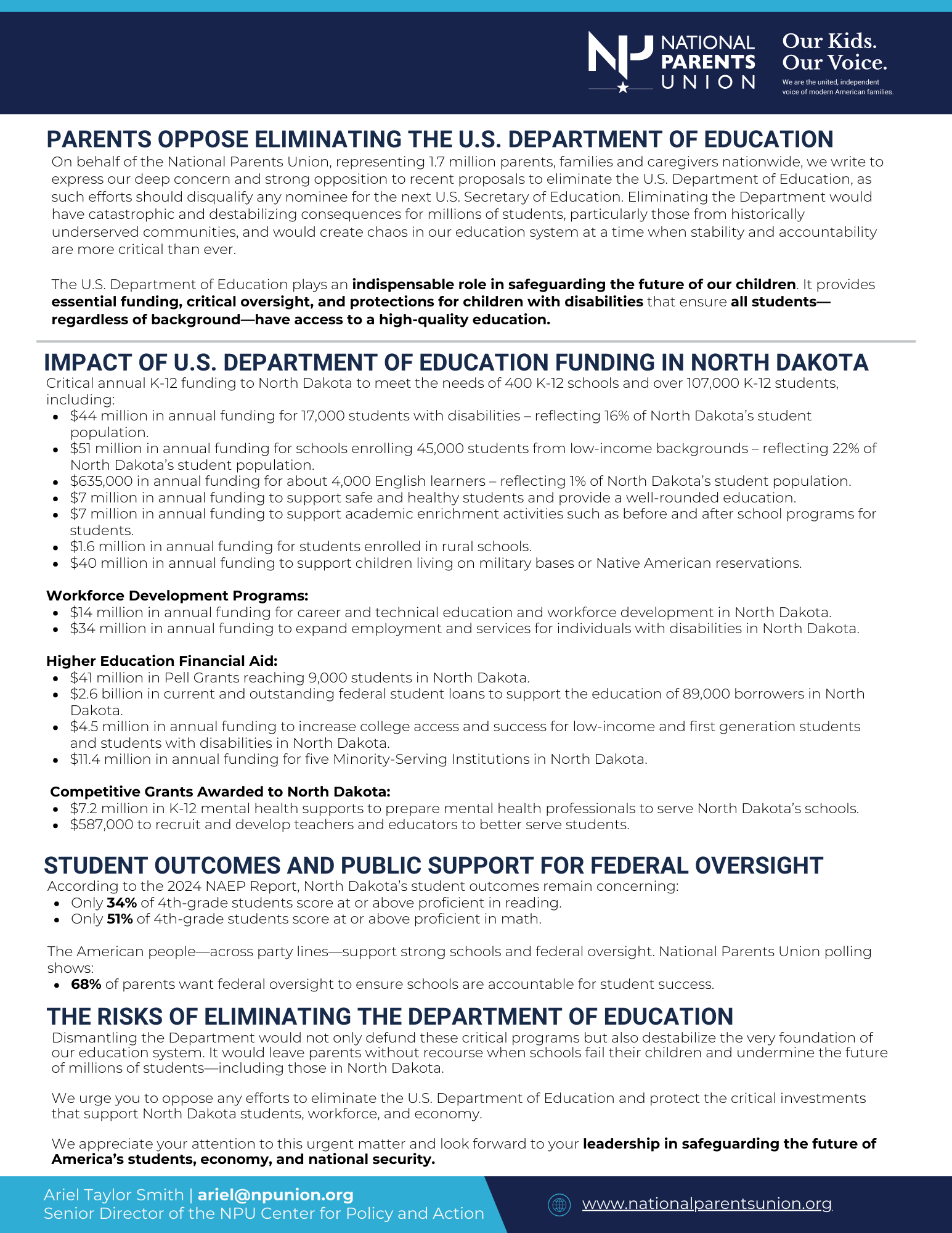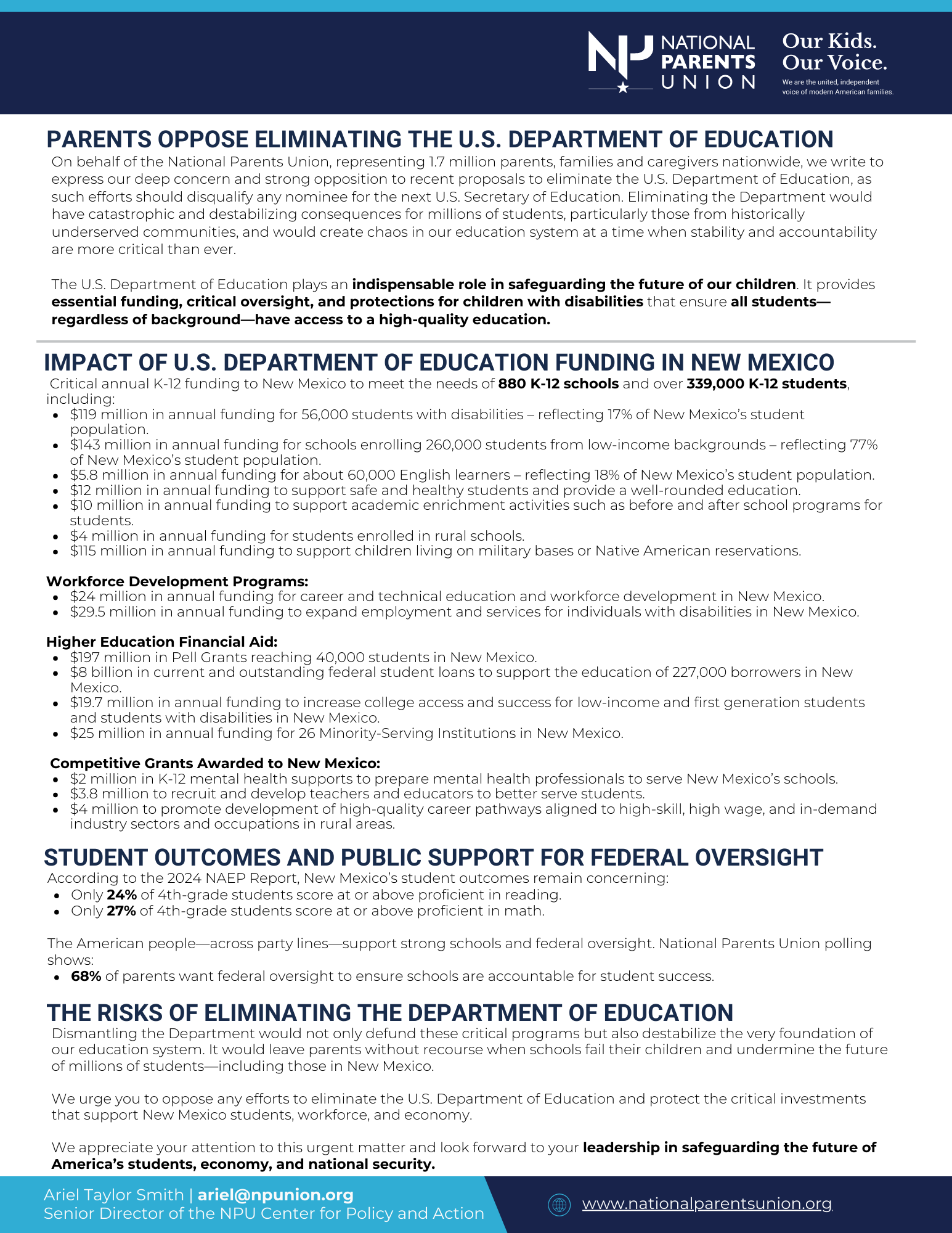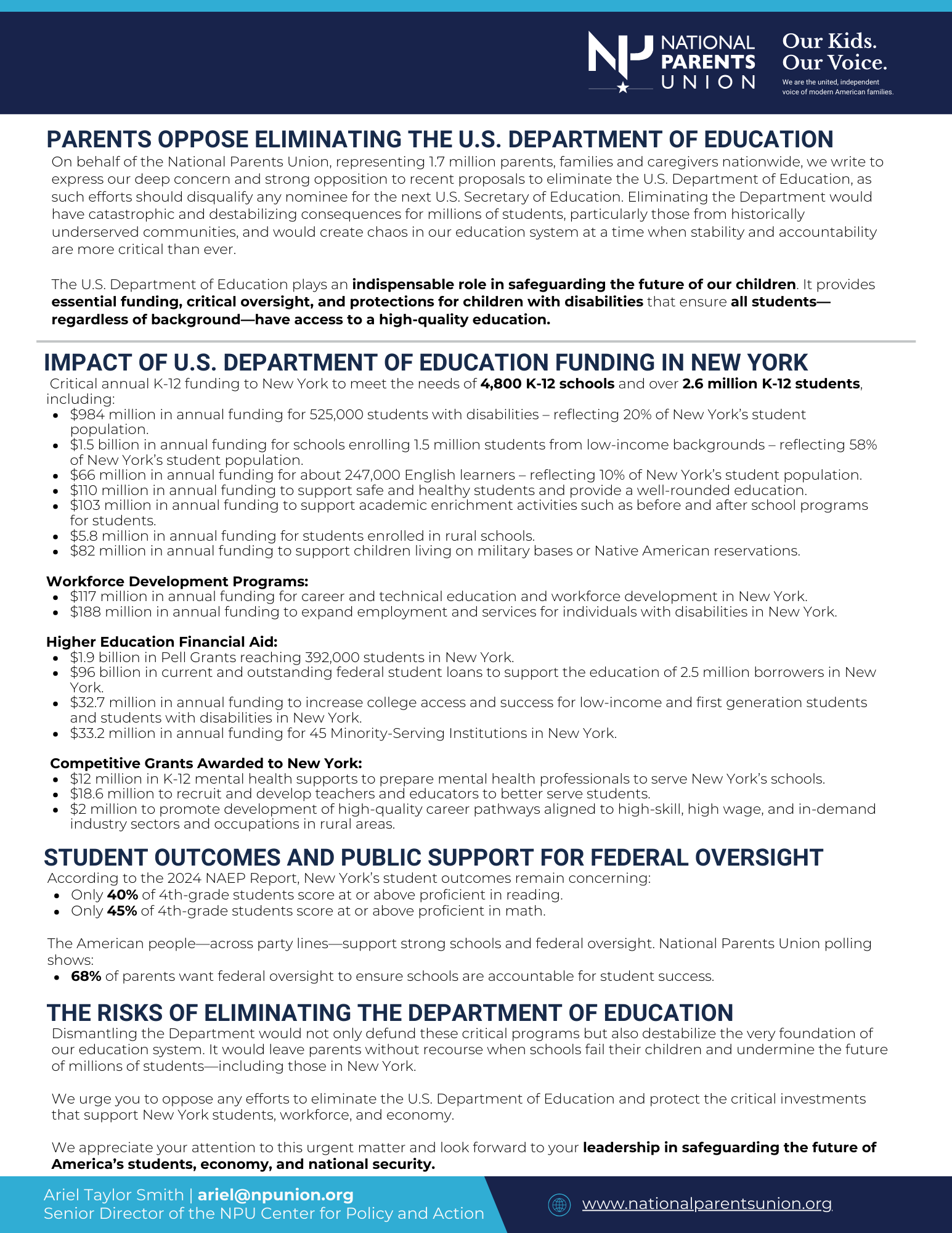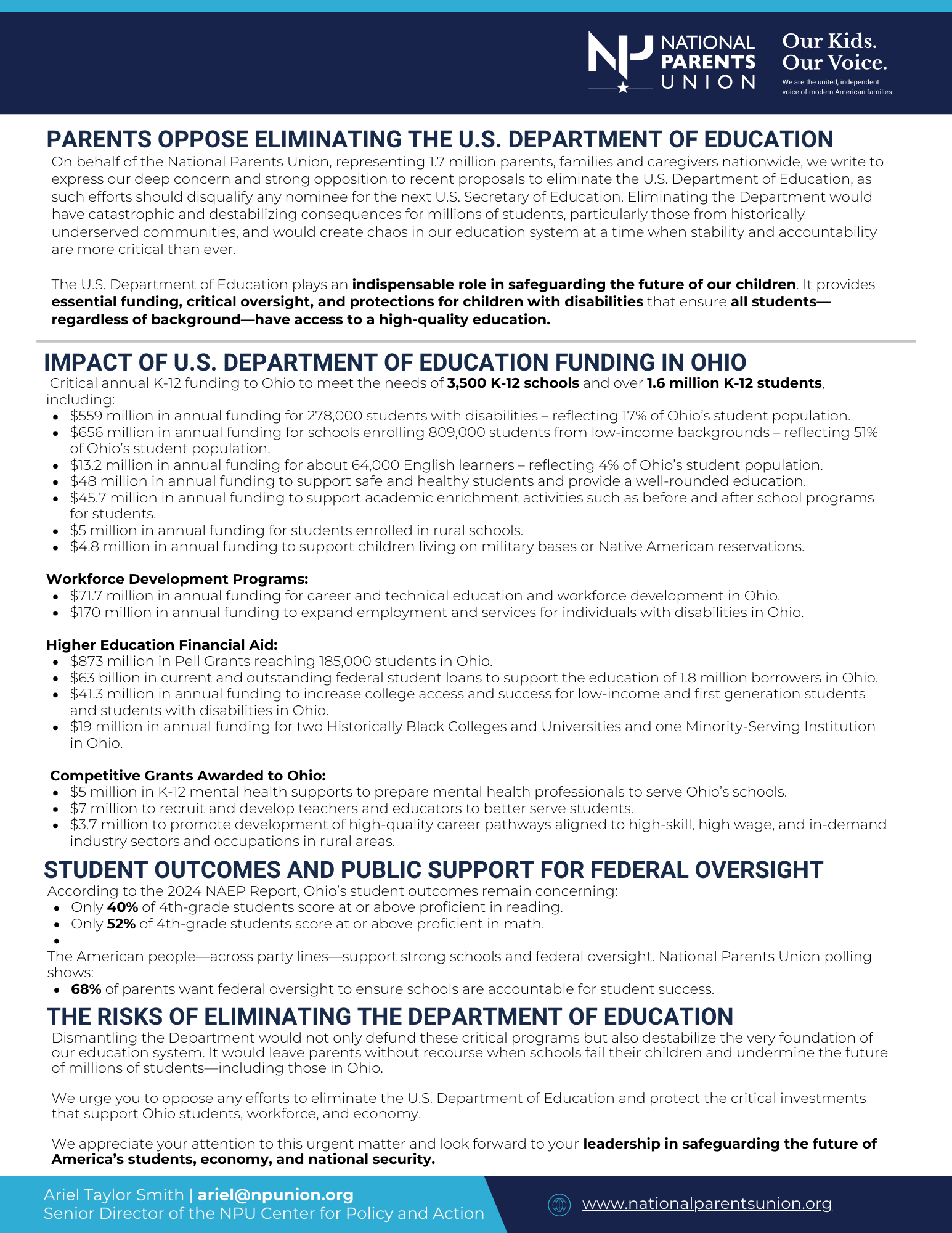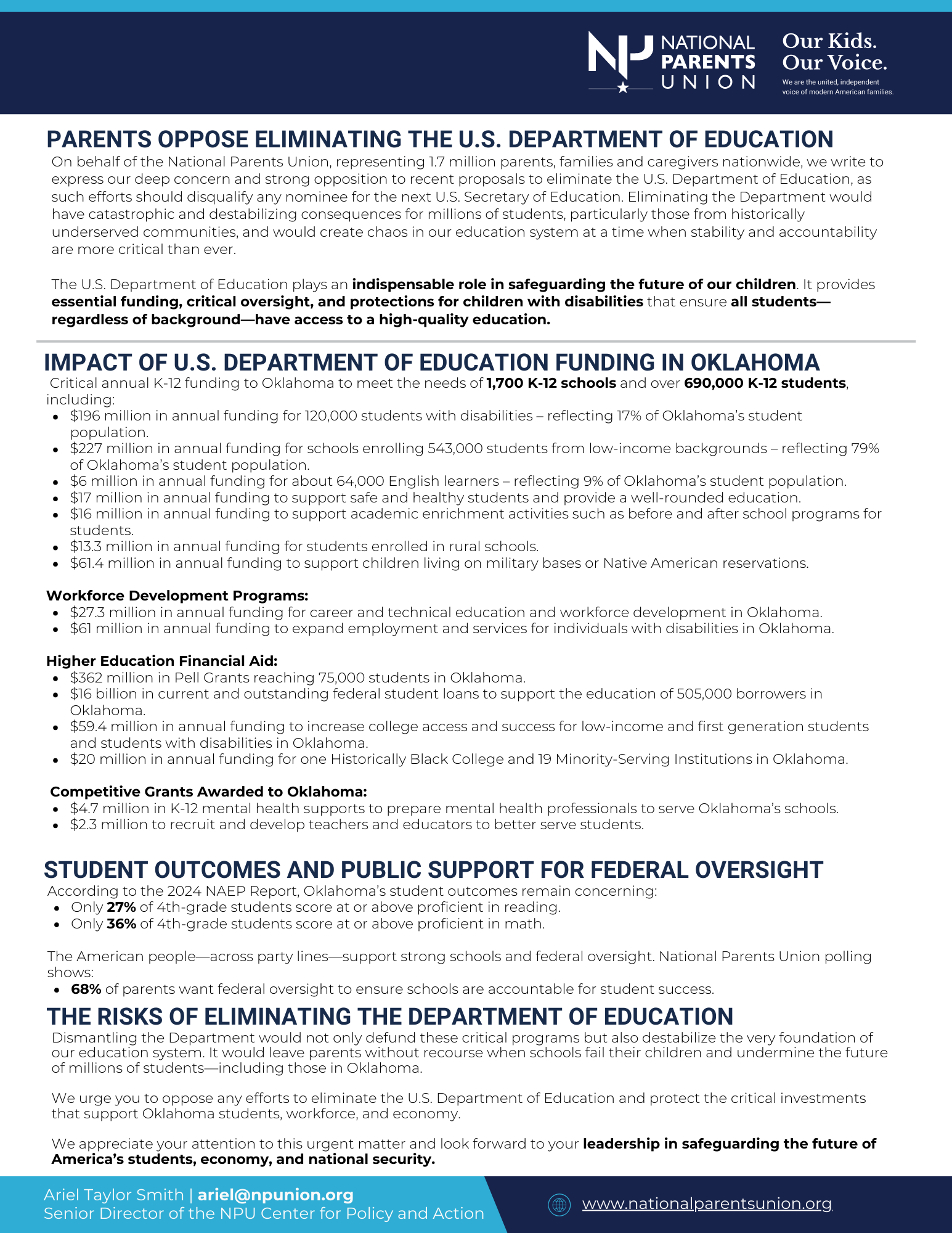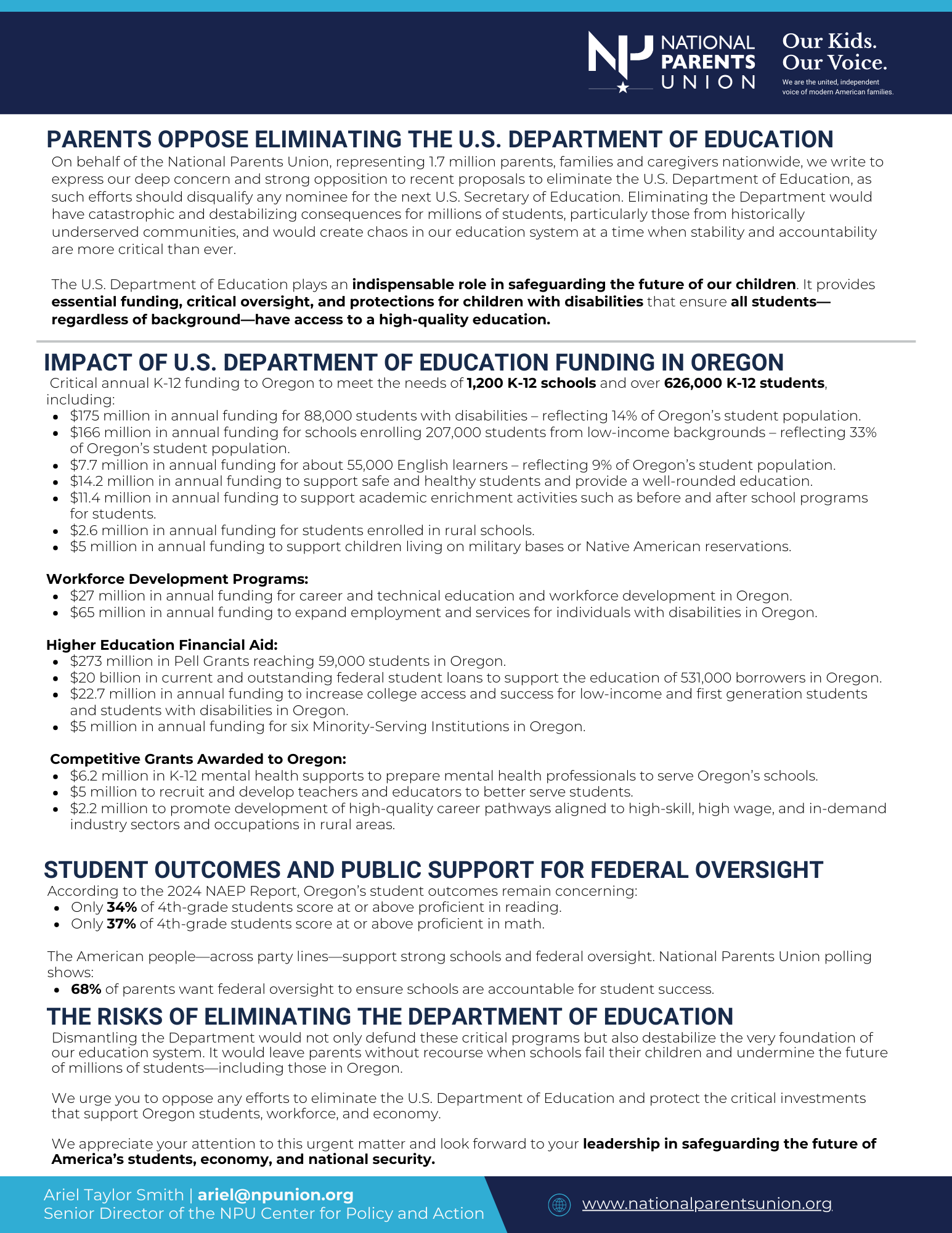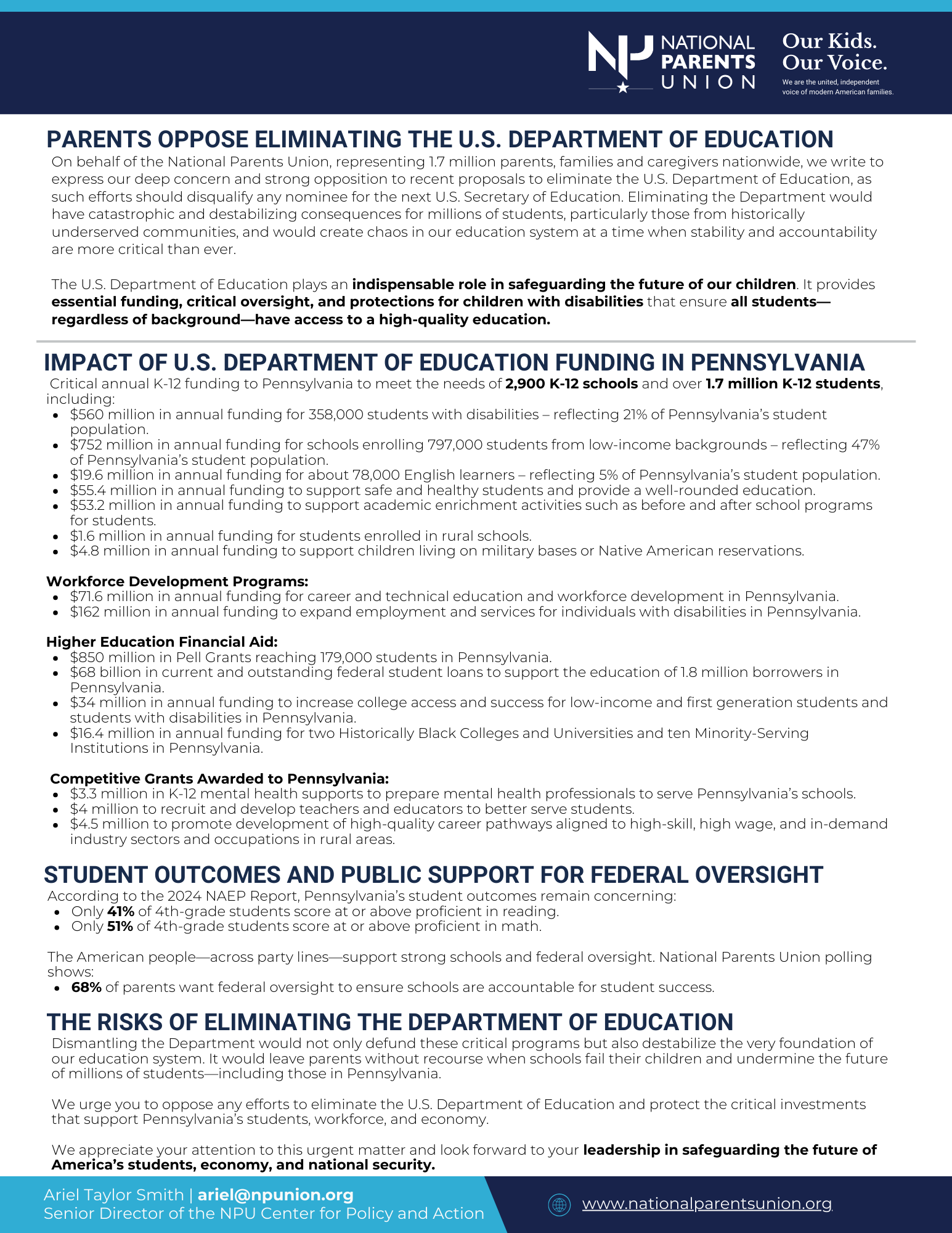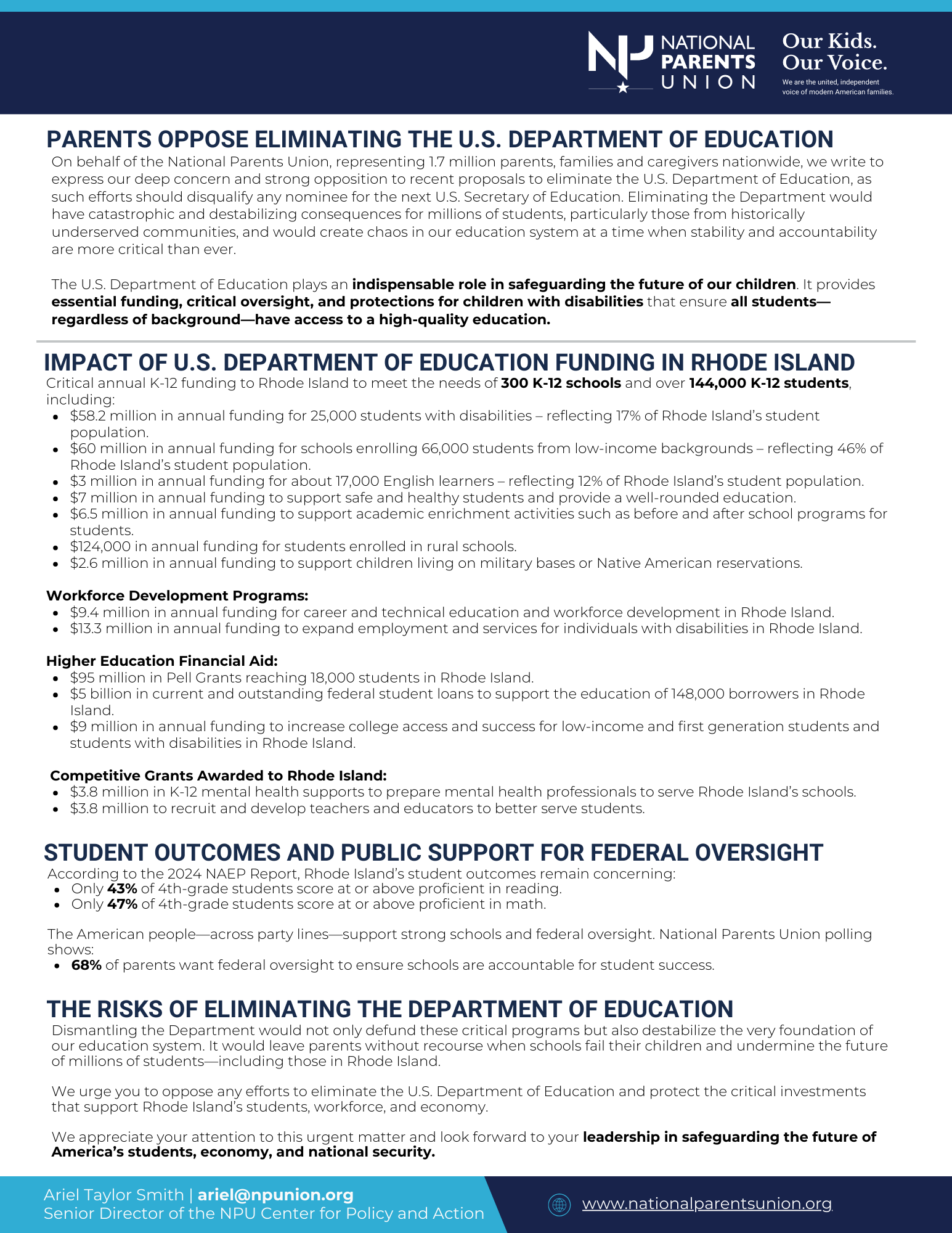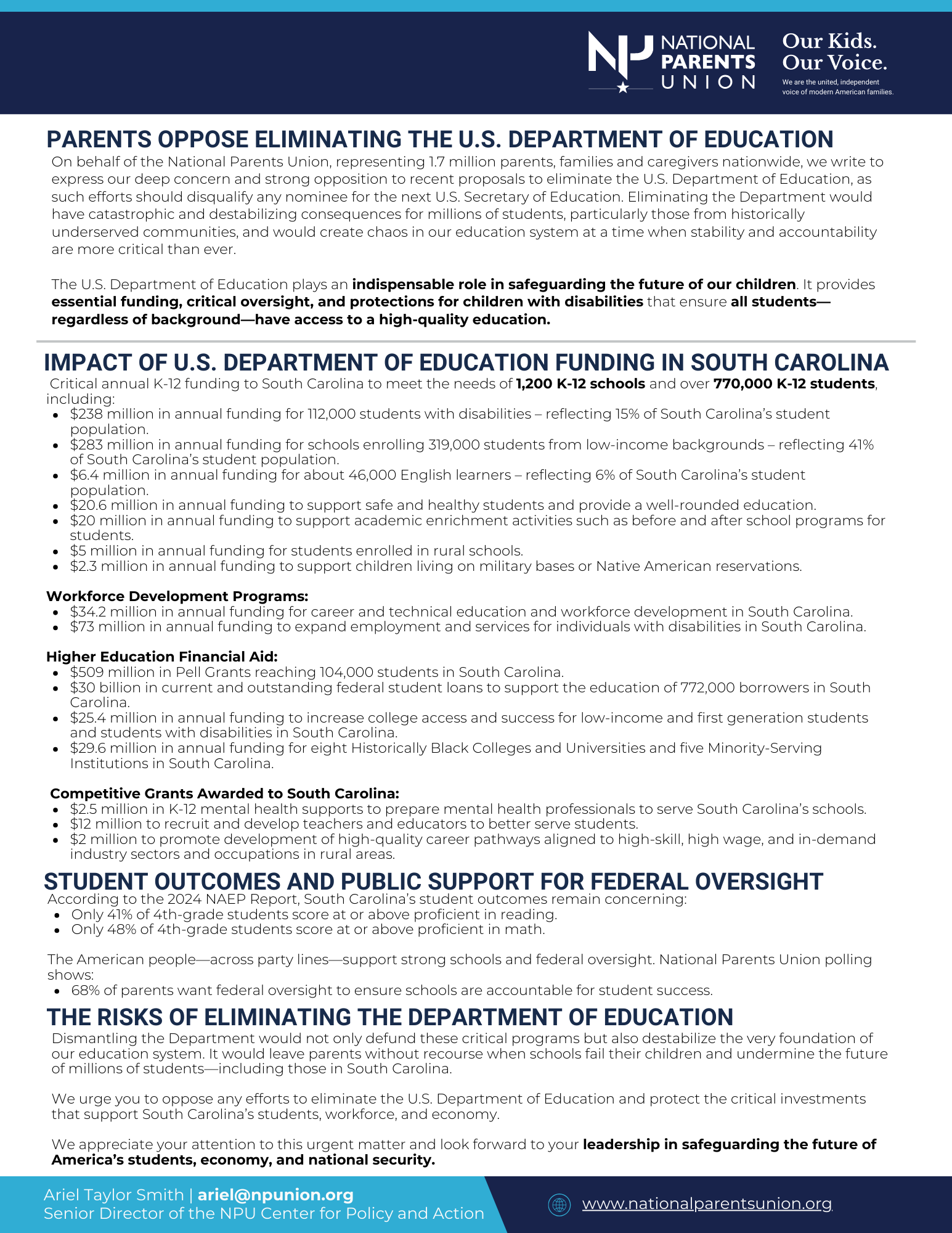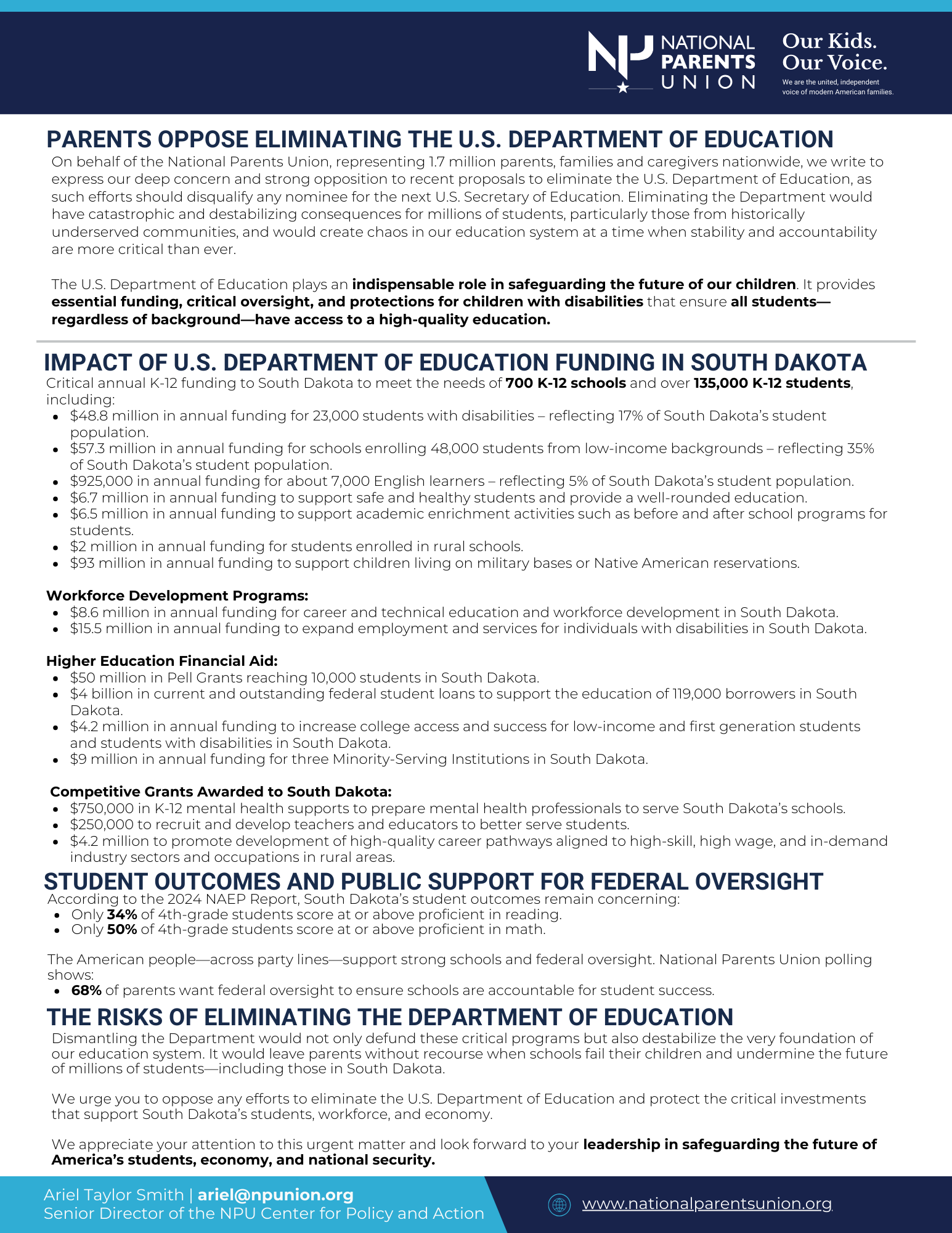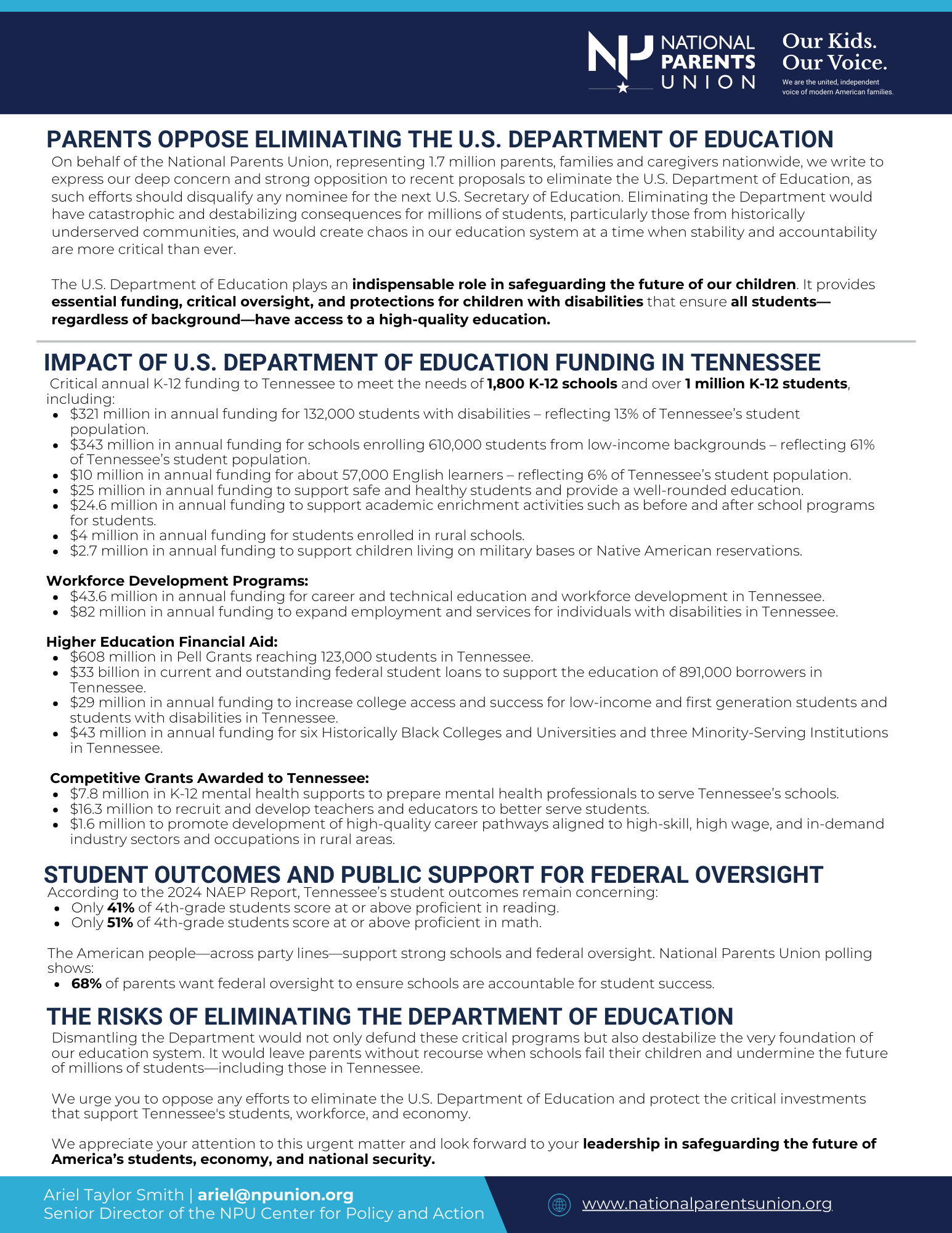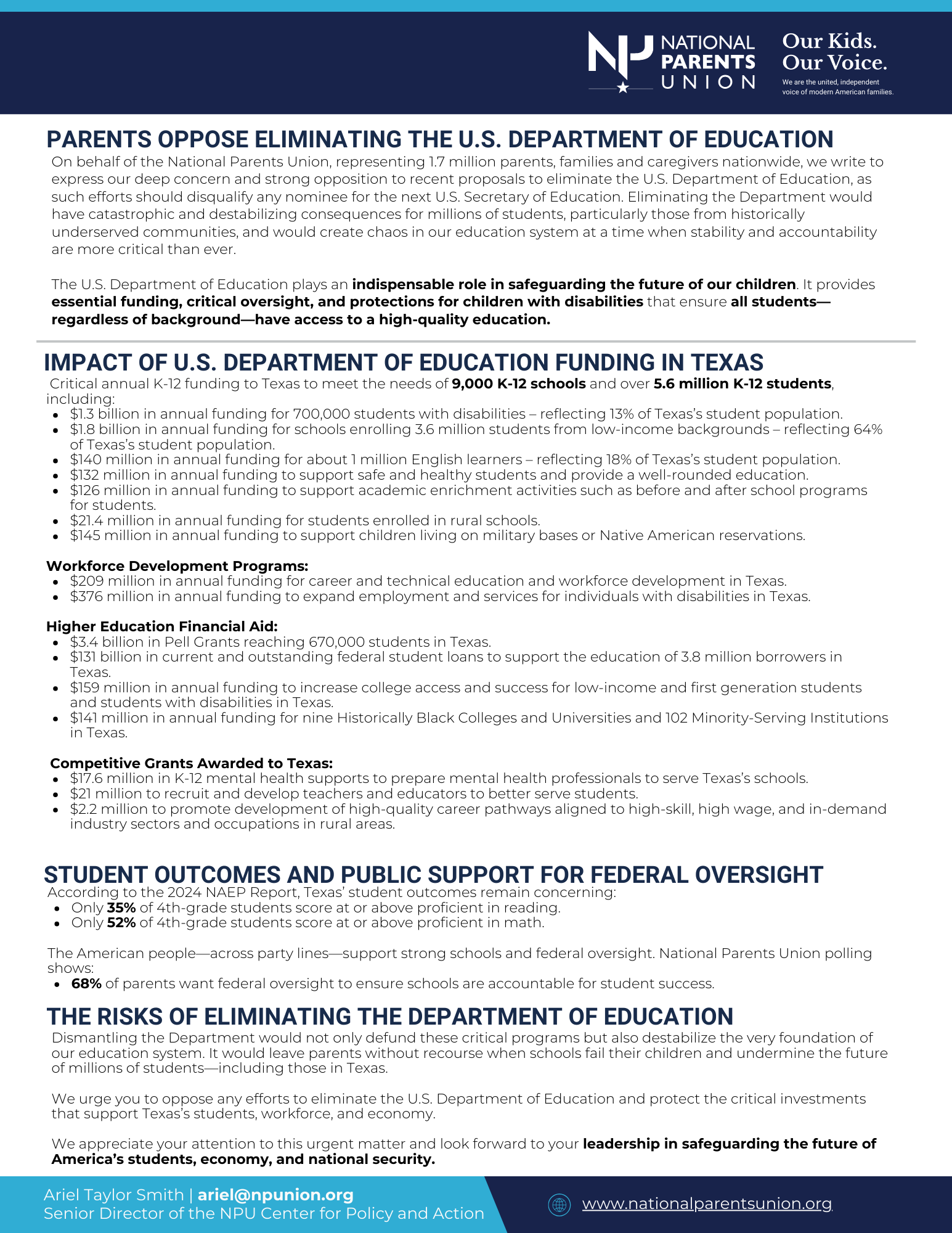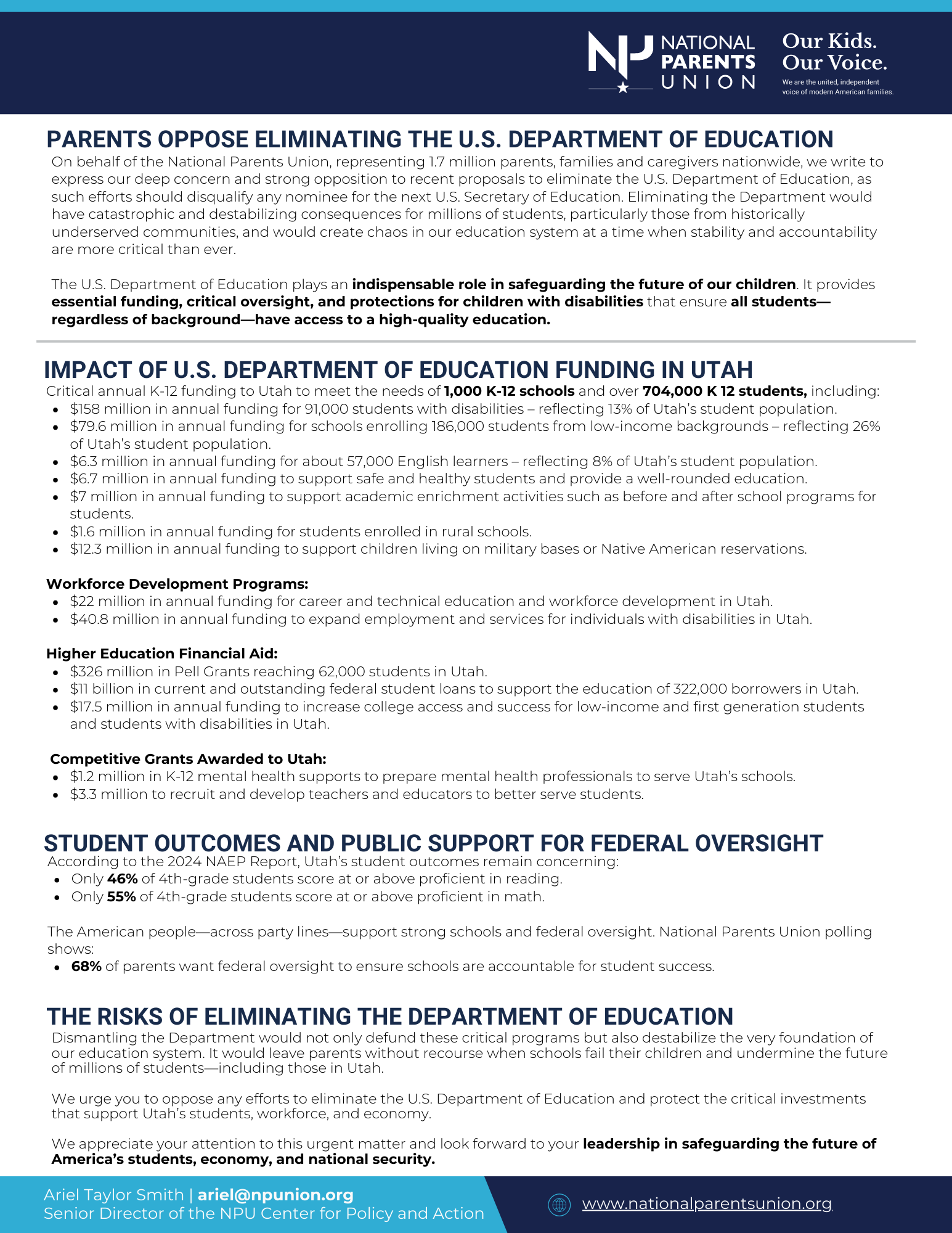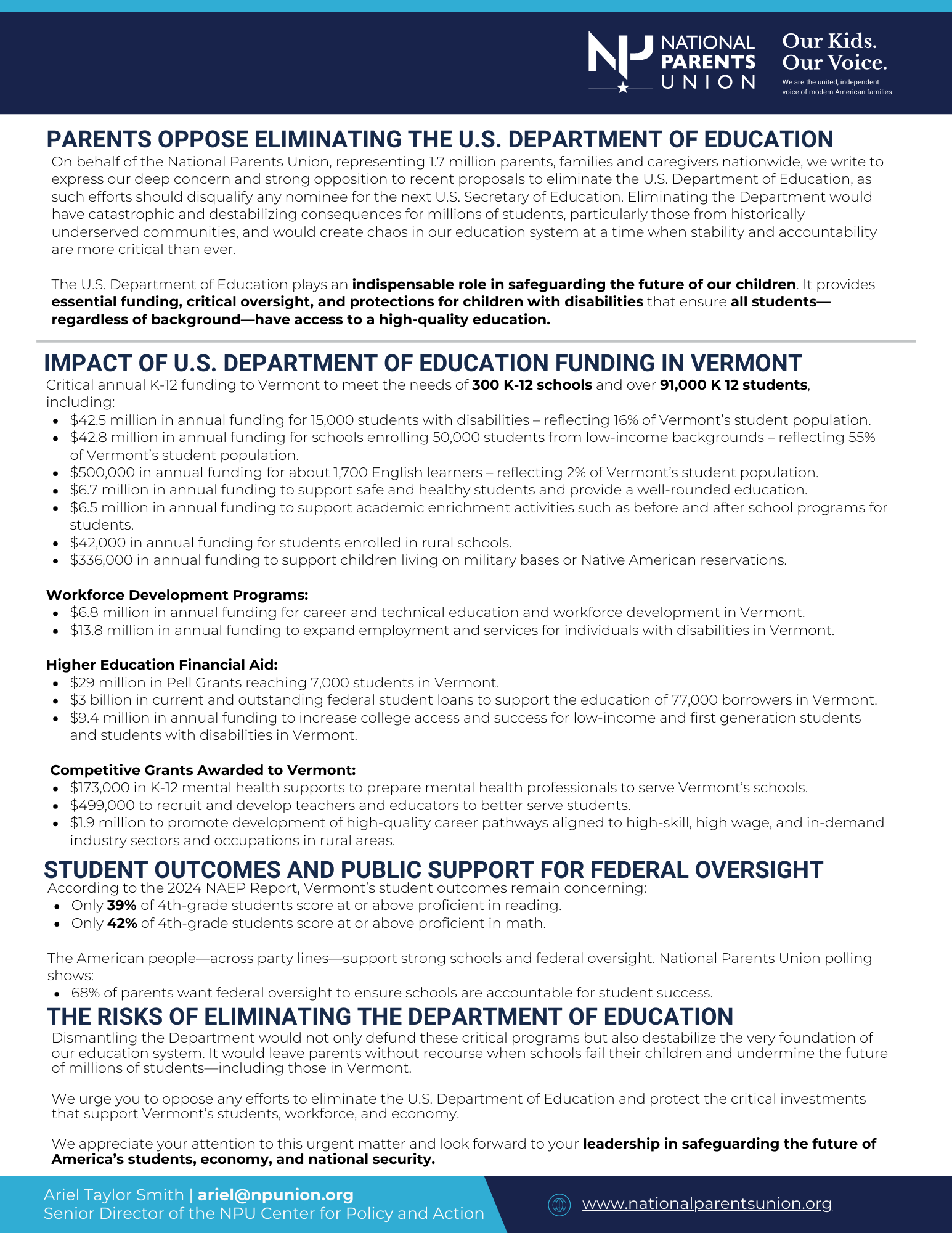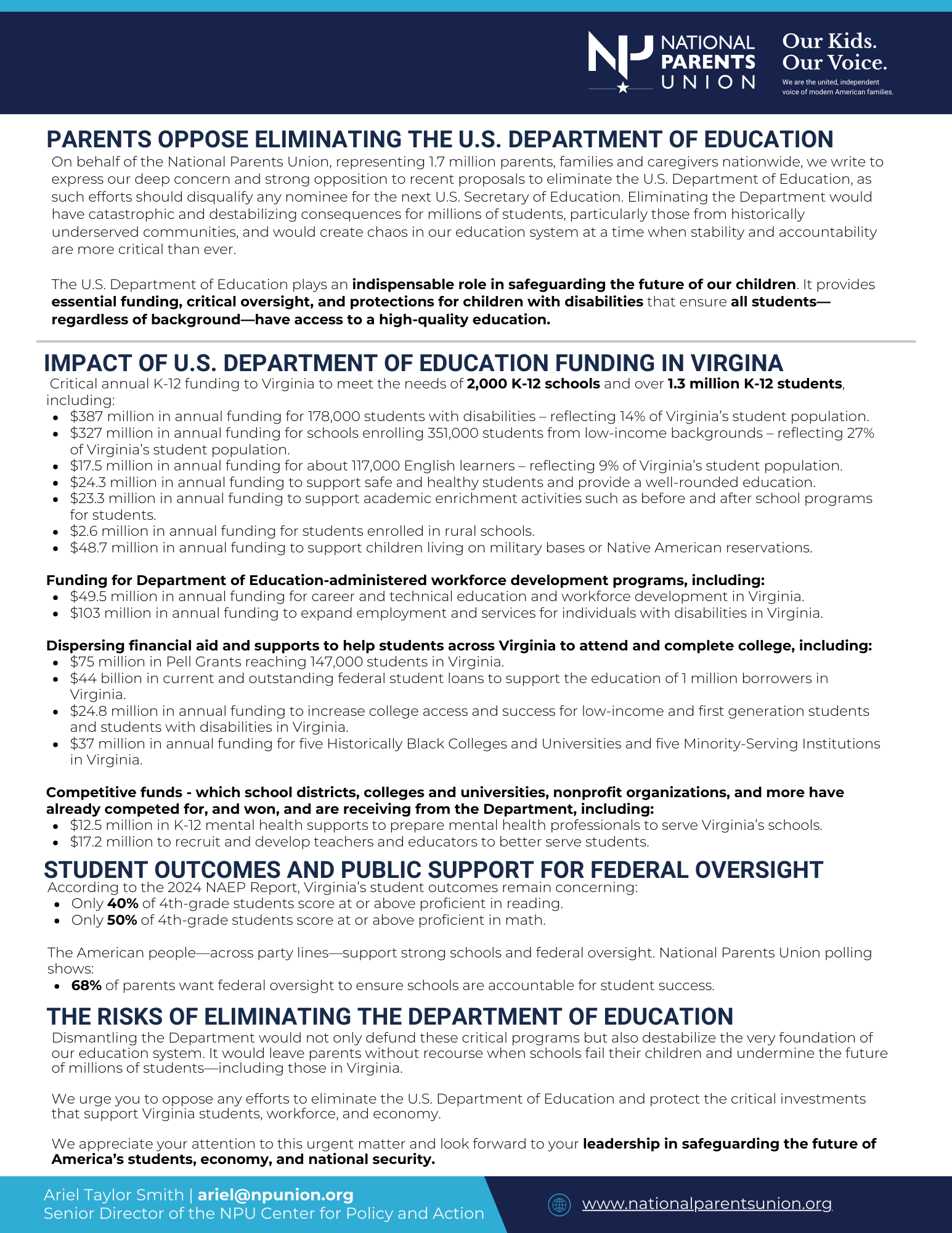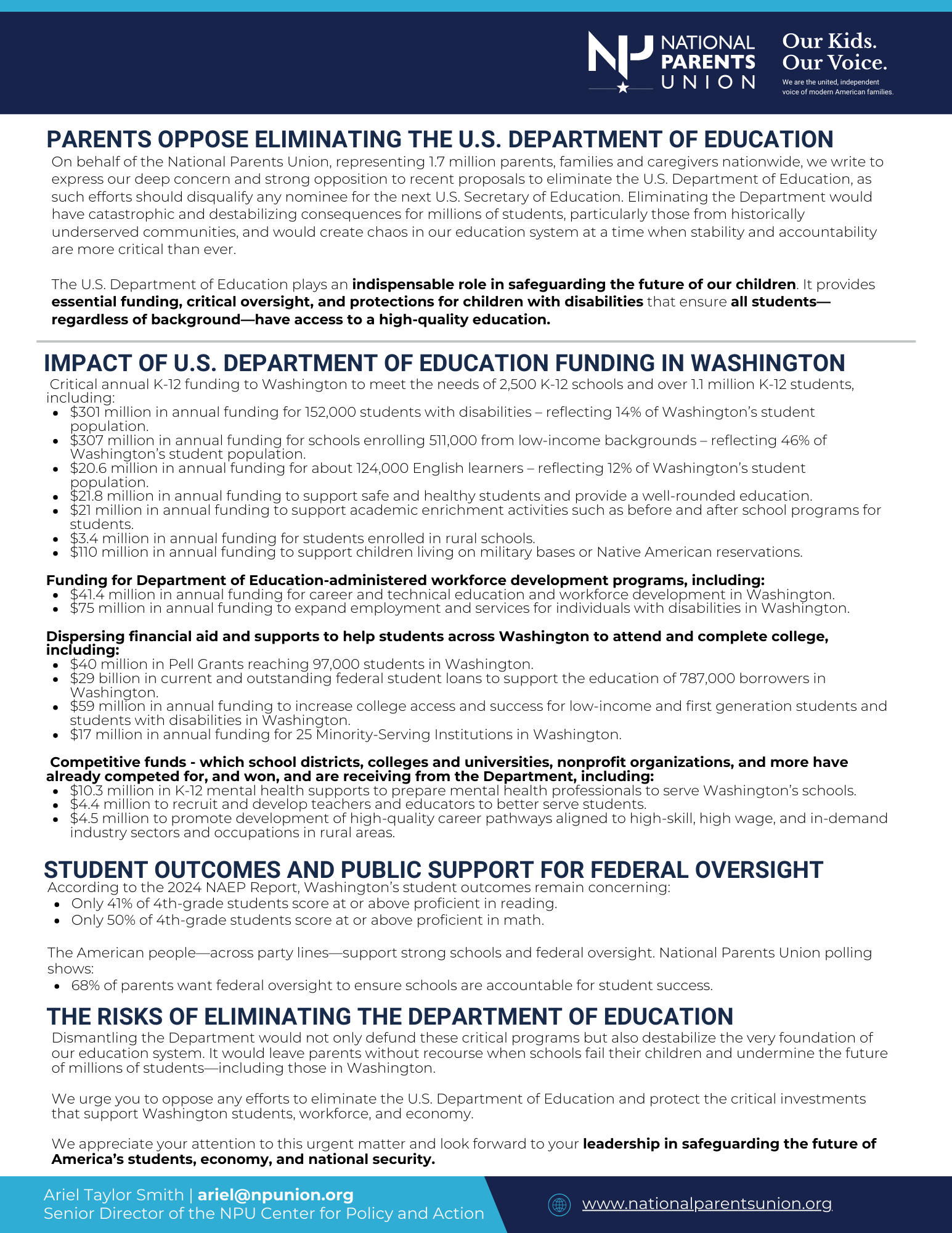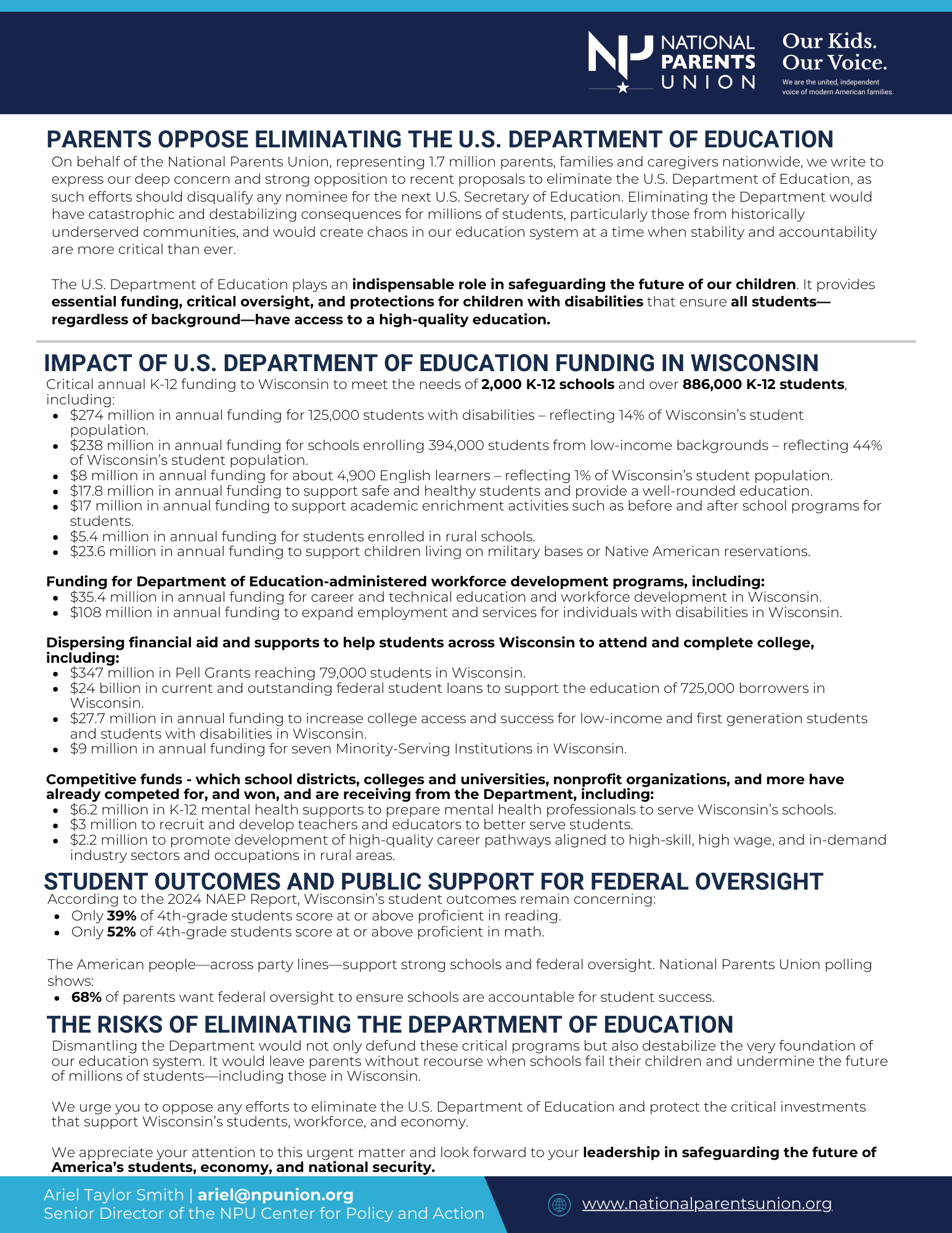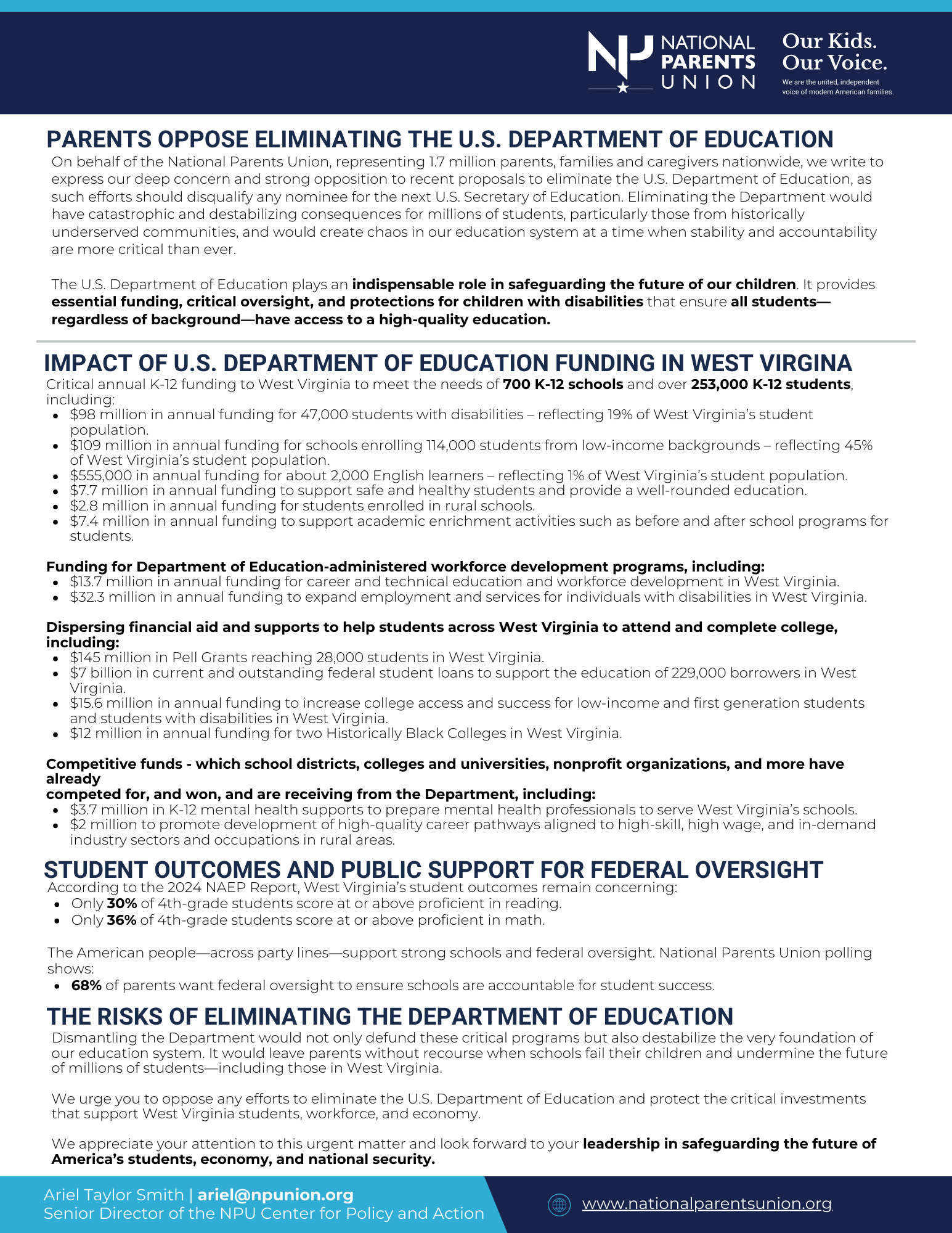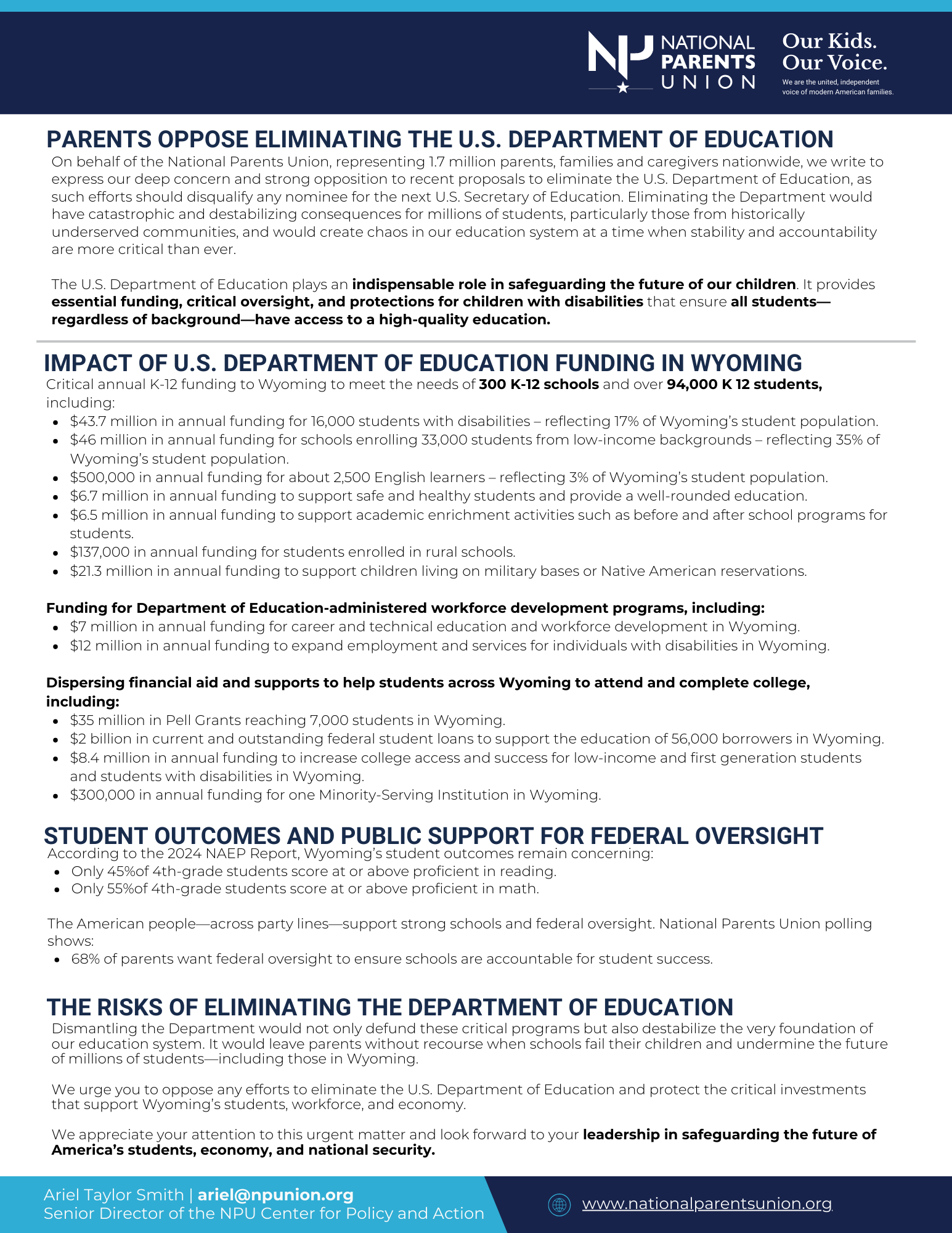Tell Congress: Protect the Department of Education
The federal government plays a limited but crucial role in ensuring every child in America has access to a high-quality education. Now, some politicians want to eliminate the U.S. Department of Education—threatening the resources, protections, and opportunities that millions of students and families rely on. We cannot let that happen.
What Does the Department of Education Do?
The U.S. Department of Education exists to promote student achievement and global competitiveness by fostering educational excellence and ensuring equal access to learning opportunities. Here’s why that matters:
Provides funding for schools, colleges, and universities to ensure students, especially those from low-income and rural communities, receive the support they need.
Invests in critical educational programs—like mental health services, after-school programs, and teacher training.
Delivers financial aid directly to students and families, making college more accessible and affordable.
Protects students from discrimination, enforcing civil rights laws in K-12 and higher education.
Supports students with disabilities, English learners, and other high-need populations.
Tracks and reports national education data to improve student outcomes and close achievement gaps.
Helps prepare students for careers, connecting education to workforce opportunities.
Who Does the Department of Education Support?
Eliminating the Department would mean eliminating vital resources for millions of students:
26 million low-income students benefit from Title I funding.
7.4 million students with disabilities receive special education services under IDEA.
5 million English Learners rely on targeted supports through Title III.
Nearly 1 million students experiencing homelessness receive aid under the McKinney-Vento program.
87 million students and parents access federal student aid for college, including Pell Grants and student loans.
100,000 public schools and 5,800 colleges receive critical funding from the Department.
Act Now: Tell Your Member of Congress to Protect the Department of Education
We cannot allow political games to put our children’s future at risk. Eliminating the Department of Education would mean pulling billions in funding from schools, stripping students of their civil rights protections, and making college less affordable.
Use your voice to stand up for students, families, and educators. Tell Congress: Oppose efforts to eliminate the U.S. Department of Education.

